Cal Poly Humboldt’s Student-Run Bilingual Newspaper

noviembre 2025
Vol. 25 Edición 3

Cal Poly Humboldt’s Student-Run Bilingual Newspaper

noviembre 2025
Vol. 25 Edición 3
Yurok fashion designer beads together identity and hope
La diseñadora de moda Yurok une identidad y esperanza


04 The Latine Psychological Association ofers a safe space for students
06 No Kings protest in Eureka rallies thousands of people
08 A ‘Big Beautiful Bill’ and a hungry campus: How will this policy impact CPH?
10 Department of Environmental Studies welcomes new Assistant Professor
14 CPH flm professor mixes passions to create women's sports bar
16 Local Dia De Los Muertos events
18 How do we fght?: “One Battle After Another” flm review
20 Opinion: Is our fate decided on the stars?
21 Health Talk with Jessica: Four healing-centered steps to prevent diabetes
22 Poetry section

08 “Gran y Hermosa Ley”: ¿Cómo afectará esta política a CPH y la comunidad?
16 Eventos locales para Dia de los Muertos
18 ¿Cómo luchamos?: Reseña de “One Battle After Another”
21 Charla de Salud con Jessica: Cuatro pasos centrados en la cicatrización para prevenir la diabetes
23 Sección de poesía
El Leñador is an English and Spanish newspaper produced by Cal Poly Humboldt students. Our staff cover and provide news to Latinx and other diverse communities on campus and in Humboldt County. We are committed to providing relevant news and expanding the representations and stories told about people of color and other marginalized groups. Our work helps create more social, political and cultural diversity in local media.
El Leñador es un periódico en español e inglés producido por estudiantes de Cal Poly Humboldt. Nuestro personal cubre y provee noticias a la comunidad Latine y otras comunidades diversas en el campus y en el condado de Humboldt. Estamos comprometidos a brindar noticias actuales y ampliar la representación y las historias que son contadas sobre la gente de color y otros grupos marginados. Nuestros esfuerzos ayudan a crear una diversa presencia social, política y cultural en los medios locales.


Editor in Chief
Noelle Doblado
Spanish Editor
Maryanne Casas-Perez
News Editor
Salvador Sandoval-Garduno
Copy Editor
Julia Rants
Layout/Design
Pamela Hernandez
Kasandra Arreola
Noelle Doblado
Julia Rants
Andrea Merezko
Gina Muñoz
Writers/Contributors
Kasandra Arreola
Andrea Merezko
Pamela Hernandez
Julia Rants
Salvador Sandoval-Garduno
Henry Lagunas
Jessica de Laguna
Ocean Edgar Gina Muñoz
Translators
Salvador Sandoval-Garduno
Osvaldo Bustos Perez
Gina Muñoz
Faculty Advisor
Andrea Juarez
Front
photo by Noelle Doblado foto por Noelle Doblado
To advertise with us, email ellenador.ads@gmail.com
El Leñador staf can be reached at el-lenador@humboldt.edu
by Salvador Sandoval-Garduno
The U.S. Department of Agriculture posted a notice to their website that Supplemental Nutrition Assistance Program (SNAP) aid will not go out starting Nov. 1. As the shutdown of the federal government continues into its third week, Humboldt County Health and Human Services warns the community of the pause. With approximately 22% of Humboldt County residents receiving SNAP benefits, according to Humboldt County Health and Human Services, this will lead to roughly 30,000 residents being affected.
As uncertainty grows, local organizations and businesses have stepped in to provide support for those being affected by the freeze. Below are some groups providing support for those being affected by the SNAP cutoff.
Hours: Monday - Saturday 8 a.m. - 5:30 p.m., Sunday 8 a.m. - 5 p.m.
Location: 211 F Street, Eureka, CA 95501
Information: Will be providing free breakfasts for those affected by the SNAP freeze. Beginning Nov. 1 from 7:30 - 10 a.m.
Hours: Wednesday, Friday, Tuesday 10 a.m. – 12:15 p.m., 1:30–3:45 p.m.
Location: 307 W. 14th St, Eureka, CA 95501
For more information, please visit their website at https://www.foodforpeople. org/ to learn about eligibility and services.
Hours: Monday - Thursday 10 a.m. –4 p.m., Friday 10 a.m. - 5:30 p.m., Saturday 9 a.m. - noon.
Location: 1000 B St, Eureka, CA 95501
Information: Providing free produce, it is recommended to arrive early for a good spot in line.
Hours: Mondays 10 a.m. - noon, 1 p.m. - 4 p.m.
Tuesday 10:30 a.m. - noon, 1 p.m. - 4 p.m.
Wednesday 10 a.m. - noon, 1 p.m. - 4 p.m.
Thursday 10 a.m. - noon, 1 p.m. - 4 p.m.
Location: Rec & Wellness room 122
Information: This resource is currently
only available for Cal Poly Humboldt students.
Hours: Sundays starting at 4 p.m.
Location: Arcata Plaza
Information: Providing free vegetarian and vegan meals.
For more resources and services, visit the Humboldt County Department of Health and Human Resources’ Community Resource List. The list can be accessed at https://humboldtgov.org/ DocumentCenter/View/54880
Escrito por Salvador Sandoval-Garduno
El Departamento de Agricultura de los Estados Unidos publicó un aviso en su página web indicando que la ayuda del Programa de Asistencia Nutricional Suplementaria (SNAP) no se distribuirá a partir del 1 de noviembre. A medida que el cierre del gobierno federal continúa por la tercera semana, el Departamento de Salud y Servicios Humanos del condado de Humboldt. Advierte a la comunidad sobre la pausa. Según el Departamento de Salud y Servicios Humanos del Condado de Humboldt, aproximadamente el 22% de los residentes del condado reciben prestaciones de SNAP, por lo que esta medida afectará a unos 30,000 residentes. A medida que aumenta la incertidumbre, las organizaciones y negocios locales han intervenido para brindar apoyo a las personas afectadas por la congelación. A continuación se enumeran algunos grupos que brindan apoyo a las personas afectadas por el corte del SNAP:
Horario: lunes a sábado, de 8 a.m. a 5:30 p. m.; domingos, de 8 a.m. a 5 p.m.
Dirección: 211 F Street, Eureka, CA 95501
Información: Se ofrecerá desayuno gratuito a las personas afectadas por la congelación del programa SNAP. A partir del 1 de noviembre, de 7:30 a.m. a 10 a.m.
foodforpeople.org/ para conocer los requisitos y los servicios.
Horario: lunes a jueves, de 10 a.m. a 4 p.m.; viernes, de 10 a.m. a 5:30 p.m.; sábados, de 9 a.m. a mediodia.
Ubicación: 1000 B St, Eureka, CA 95501
Información: Se ofrecen productos agrícolas gratuitos, se recomienda llegar temprano para conseguir un buen lugar en la fila.
Jueves 10 a.m. - mediodia, 1 p.m. - 4 p.m.
Ubicación: Edificio Rec & Wellness, sala 122
Información: Este recurso solo está disponible actualmente para los estudiantes de Cal Poly Humboldt.
Horario: domingos a partir de las 4 p.m.
Ubicación: Arcata Plaza
Información: Se ofrecen comidas vegetarianas y veganas gratuitas.
Horario: miércoles, viernes y martes, de 10 a. m. a 12:15 p.m. y de 1:30 p.m. a 3:45 p.m.
Ubicación: 307 W. 14th St, Eureka, CA 95501
Para obtener más información, visite su sitio web en https://www.
Horario: Lunes 10 a.m. - mediodia, 1 p.m. - 4 p.m.
Martes 10:30 a.m. - mediodia, 1 p.m.4 p.m.
Miércoles: 10 a.m. - mediodia, 1 p.m.4 p.m.
Para obtener más recursos y servicios, visite la Lista de recursos comunitarios del Departamento de Salud y Recursos Humanos del condado de Humboldt. Puede acceder a la lista en https://humboldtgov. org/DocumentCenter/View/54880
by Kasandra Arreola
Nearly a third of Cal Poly Humboldt’s student population is Latine, and with many students coming from all over, it can be quite a culture shock. The Latine Psychological Association (LPA) is trying to change that by creating a welcoming community space.
Along with this culture shock, many students have a difficult time transitioning and battle mentally with where to go and who to talk to.
“Because of the stark contrast of culture here, you know, [the LPA] is a place where they [students] can feel at home and relate to other students and just bring in different aspects of the Latine culture. We kind of noticed that there was a pretty large percentage of Latine students in the psychology department, and we didn't really see any club or organization that represented that group,” said Hedie Bojorquez, an officer of the LPA.
The LPA has officially been active since fall 2024 and has since hosted movie gatherings, craft nights, hikes and guest speakers. Members of the LPA gather in the Balabanis House every other Monday from 5-6 p.m., where they create a sense of community for not just Latine students, but anyone who needs the space.
LPA’s roots were planted two years ago when Dr. Brandilynn Villarreal, the advisor and CPH faculty member, applied for grants to get it started. Villarreal is a developmental psychologist who focuses on motivation and self-regulation. Villarreal shared the kinds of discussions that are had in the meetings and the intersections that students explore, particularly with firstgeneration students.
“Students brought up feeling homesick, imposter syndrome, not having money, not knowing what to do in this space, or not seeing people
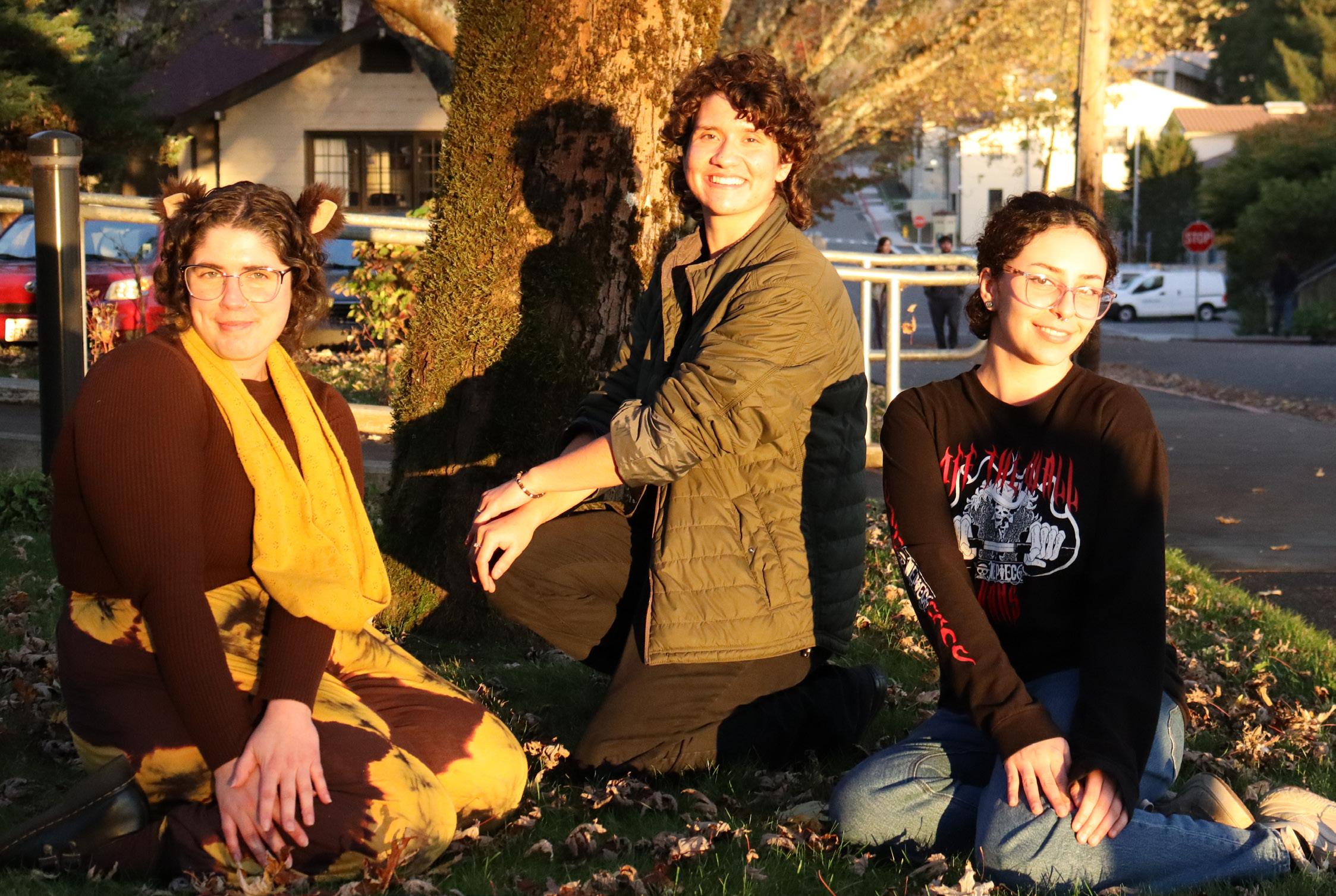
like yourself,” Villarreal said.
Chairperson, Keith Flores, feels that LPA has given a space for those who feel like outsiders to find community.
“We're a family. It's, in all honesty, the community that I had been fighting for so hard freshman year just to build and I felt really kind of outcasted,” Flores said. “I feel like everybody has their own story being an outcast, but mine comes from being a mixed student who's first-generation, who had no background knowledge as to how to get into and get through college, so building this network of people who are just abundantly helpful and really friendly and really funny.”
Different backgrounds make for a diverse group of leaders in the LPA.
Bojorquez and Flores hail from San Diego, where the Latine population is abundant. Others, like Angelina Floreale, LPA secretary, have called Humboldt home since she was 5 years old. Floreale, who is navigating her own culture as a ColombianAmerican, seeks to guide those who may not feel all that comfortable in their culture.
“I hope to kind of be that voice when we do tabling and things, to be like, people don't look at me and think I'm Latine at all,” said Floreale.
The current political climate has sparked stress for students, especially those who are undocumented.
“Access to resources in a community that supports and cares
and creates spaces for people to process what's happening and what does happen, or what has happened, that can make a huge difference when it comes to intergenerational trauma,” Floreale said.
Floreale spoke on the LPA’s efforts to come together to support the psychological stress students face in hard times and how finding community is necessary.
“We are pro human in every sense of the word,” Floreale said. “We are pro woman, pro queer, pro brown, pro trans, pro everyone that needs help and love and care in this community, because it's a hard time for all of us.”
Escrito por Kasandra Arreola y traducido por Maryanne Casas-Perez
Casi una tercera parte de la población estudiantil de Cal Poly Humboldt es latine, y para muchos estudiantes que vienen de distintos lugares, la experiencia puede ser un verdadero choque cultural. La Asociación Psicológica Latine (LPA) busca cambiar eso creando un espacio comunitario acogedor.
Además del choque cultural, muchos estudiantes enfrentan dificultades al adaptarse y luchan mentalmente con la incertidumbre de a dónde acudir o con quién hablar.
“Debido al marcado contraste cultural que existe aquí, [la LPA] es un lugar donde pueden sentirse como en casa, relacionarse con otros estudiantes y compartir diferentes aspectos de la cultura latine. Notamos que había un porcentaje bastante alto de estudiantes latinés en el departamento de psicología, y no veíamos ningún club u organización que representara a ese grupo”, dijo Hedie Bojorquez, una de las oficiales de la LPA.
La LPA ha estado oficialmente activa desde el otoño de 2024 y, desde entonces, ha organizado proyecciones de películas, noches de manualidades, caminatas y charlas con invitados. Los miembros de la LPA se reúnen en la Casa Balabanis cada otro lunes de 5 a 6 p.m., donde crean un sentido de comunidad no solo para los estudiantes latines, sino para cualquiera que necesite ese espacio.
Las raíces de la LPA se empezaron hace dos años, cuando la Dra. Brandilynn Villarreal, asesora del grupo y profesora de Cal Poly Humboldt, solicitó becas para poner en marcha el proyecto. Villarreal es psicóloga del desarrollo enfocada en la motivación y la autorregulación. Ella compartió algunos de los temas que se discuten en las reuniones y las intersecciones que los estudiantes exploran, especialmente entre los de primera generación.
“Los estudiantes mencionaron sentirse nostálgicos, el síndrome del impostor, no tener dinero, no saber qué
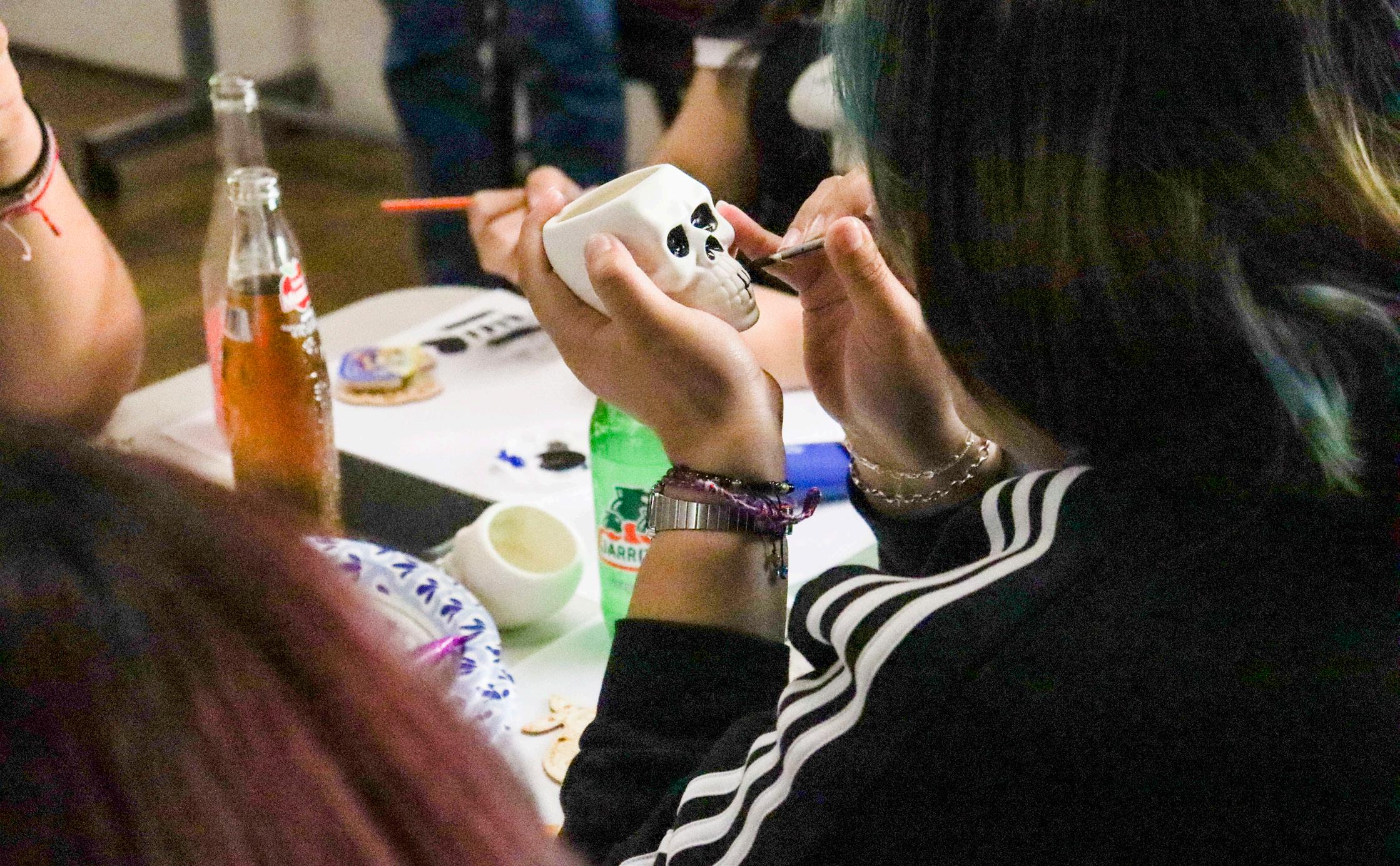
hacer en este entorno o no ver a personas como ellos mismos”, dijo Villarreal.
El presidente, Keith Flores, siente que la LPA ha ofrecido un espacio para quienes se sienten como forasteros y buscan comunidad.
“Somos una familia. Honestamente, es la comunidad por la que luché tan duro durante mi primer año para poder construirla, porque me sentía realmente excluido”, dijo Flores. “Siento que todos tenemos nuestra propia historia de sentirnos marginados, pero la mía viene de ser un estudiante mestizo, de primera generación, que no tenía ningún conocimiento previo sobre cómo ingresar y avanzar en la universidad. Construir esta red de personas increíblemente serviciales, amables y divertidas ha sido muy significativo”.
Las diferentes procedencias hacen que la LPA tenga un grupo diverso de líderes. Bojorquez y Flores son de San Diego, donde la población latine es abundante. Otros, como Angelina Floreale, secretaria de la LPA, han llamado a Humboldt su hogar desde los 5 años. Floreale, quien navega su propia identidad como colombianaestadounidense, busca guiar a quienes tal vez no se sientan del todo cómodos con su cultura.
“Espero poder ser esa voz cuando hacemos actividades de difusión y cosas así, porque la gente no me ve y piensa que soy latine”, dijo Floreale.
El clima político actual ha generado estrés entre los estudiantes, especialmente aquellos que son indocumentados.
“Tener acceso a recursos dentro de
una comunidad que apoya, cuida y crea espacios para que las personas procesan lo que está pasando, lo que ha pasado o lo que podría pasar puede marcar una gran diferencia cuando hablamos de trauma intergeneracional”, dijo Floreale. Floreale también habló sobre los esfuerzos de la LPA por unirse para apoyar el estrés psicológico que enfrentan los estudiantes en tiempos difíciles y cómo encontrar comunidad es esencial. “Somos pro humanidad en todo el sentido de la palabra”, dijo Floreale. “Somos pro mujer, pro queer, pro moreno, pro trans, pro todos los que necesitan ayuda, amor y cuidado en esta comunidad, porque es un momento difícil para todos nosotros.”

by Gina Muñoz
Thousands of people gathered at the Humboldt County Courthouse in Eureka on Oct. 18 for the No Kings protest. Attendees held different signs denouncing the current president and the administration’s policies, while wearing colorful outfits and inflatable suits in a show of non-violent action.
The protest was organized through the local 50501 chapter, a national organization created to oppose President Donald J. Trump and his policies. For the protest, members of 50501, and other groups, were in charge of printing and distributing flyers, as well as talking with street medics and set up a food drive for Food Not Bombs Eureka.
At the protest, Gus Mcgivney, who was waiting for his bus back to Memphis, Tennessee, said that although he considers himself a Trump supporter, he supports demonstrations like this.
“This is wonderful,” Mcgivney said. “I love seeing this, people have the right to speak what they want to speak.”
Maya Montes de Oca, a recent Cal Poly Humboldt graduate, joined the protest as a way to speak out for those most vulnerable.
“I see my family and community being targeted,” Montes de Oca said. “I see women and fem-presenting people being targeted and I’ve experienced that myself.”
Montes de Oca believes the protest is a way to unify as a community and stand together, especially to show solidarity for immigrants, people of color, LGBTQ+ communities and Palestinians.
“I think I would be doing myself a disservice for not speaking up,” Montes de Oca said. “Because we cannot be taken up by apathy even when we feel hopeless.”
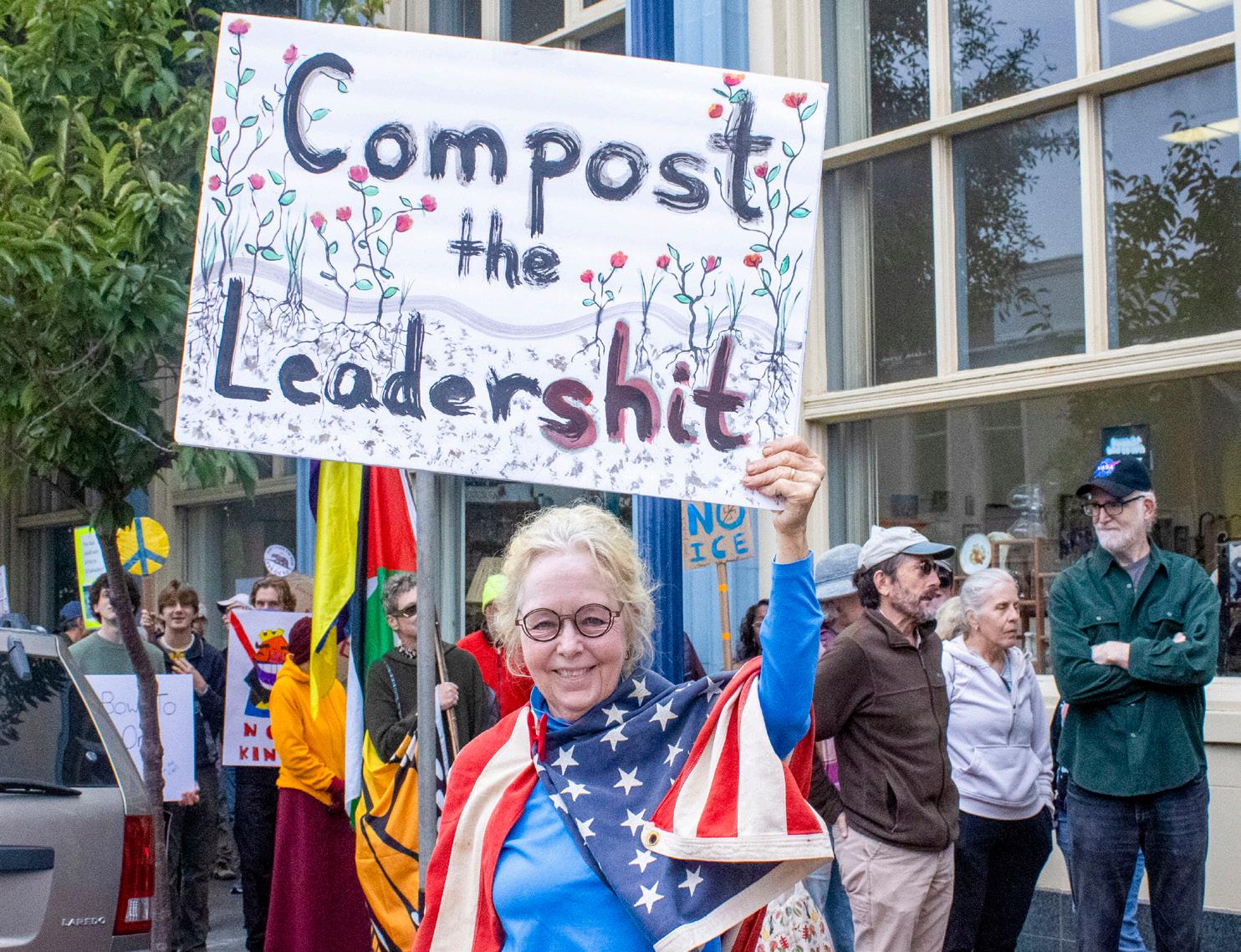





by Andrea Merezko
At Cal Poly Humboldt, students who depend on food programs such as OhSNAP! and CalFresh may soon feel the effects of Trump’s One Big Beautiful Bill, a federal proposal that aims to cut spending on social welfare programs, including nutrition assistance.
On July 4, the One Big Beautiful Bill Act (OBBBA) was signed into law, resulting in changes to federal student aid programs. Some of these changes went into effect immediately, while others will go into effect next year and beyond.
OhSNAP! is Cal Poly Humboldt’s student food program and basic needs resource center. The name stands for "Students for Nutrition and Access to Produce”. The program offers a free food pantry, stocking non-perishable items and fresh produce. This includes weekly produce pop-ups featuring locally grown goods and support for applying to CalFresh food benefits, located in Room 122 of the Recreation and Wellness building on campus.
“Cal Poly Humboldt’s OhSNAP! saw 42% of the student population last year, which was nearly 30,000 visits. At Cal Poly Humboldt, we know that access to healthy food is essential for student success,” said Iridian Casarez, communications specialist for Marketing and Communications.
“We remain committed to advocating for resources that help students meet their basic needs so they can focus on their education.”
Currently, the university does not have an estimate of how much these food programs will be financially impacted, as things are still developing.
The CalFresh Program is California's version of the Supplemental Nutrition Assistance Program (SNAP), providing food assistance to low income California residents.
On Oct. 1, $250,000 of federal funds were eliminated from Humboldt County Public Health’s CalFresh Healthy Living budget, according to a statement on their website. These funds are used to improve the health and nutrition of children, students and vulnerable members of the community.
The Humboldt County Department of Health & Human Services’ Public Health Branch (DHHS) funding loss comes as a result of the passing of the bill. SNAP and CalFresh funding has been used locally to pay for nutrition accessibility at both CPH and local K-12 schools.
With students being impacted, social work major, Caroline Garza, voiced her disappointment in what the country thinks is important.
“Gran y Hermosa Ley”: ¿Cómo
Escrito por Andrea Merezko y traducido por Maryanne Casas-Perez
En Cal Poly Humboldt, los estudiantes que dependen de programas alimentarios como OhSNAP! y CalFresh pronto podrían sentir los efectos de la One Big Beautiful Bill de Trump, una propuesta federal que busca reducir el gasto en programas de bienestar social, incluyendo la asistencia alimentaria. El 4 de julio, la One Big Beautiful Bill Act (OBBBA) fue promulgada como ley, lo que trajo cambios en los programas federales de ayuda estudiantil. Algunos de estos cambios entraron en vigor de inmediato, mientras que otros lo harán el próximo año y en adelante. OhSNAP! es el programa estudiantil de alimentos y centro de recursos de necesidades básicas de Cal Poly Humboldt. Su nombre significa “Students for Nutrition and Access to Produce” (Estudiantes por la Nutrición y el Acceso a Productos Frescos). El programa ofrece una despensa gratuita con alimentos no perecederos y productos frescos. También organiza distribuciones semanales de frutas y verduras locales y brinda apoyo para solicitar

“I don't think we should deduct any money from Calfresh and SNAP because families rely on those funds,” Garza said. “Often when you can't afford food you are left to get food that isn't very good for
you.” The OBBBA will cut federal funding to SNAP programs by $186 billion over the next 10 years, according to the Congressional Budget Office (CBO).
los beneficios alimentarios de CalFresh. Todo esto se encuentra en el salón 122 del edificio Recreation and Wellness en el campus.
“El programa OhSNAP! de Cal Poly Humboldt atendió al 42% de la población estudiantil el año pasado, con casi 30,000 visitas. En Cal Poly Humboldt sabemos que el acceso a alimentos saludables es esencial para el éxito estudiantil,” dijo Iridian Casarez, especialista de Marketing and Communications. “Seguimos comprometidos en abogar por recursos que ayuden a los estudiantes a cubrir sus necesidades básicas, para que puedan concentrarse en su educación.”
Actualmente, la universidad no cuenta con una estimación de cuánto se verán afectados económicamente estos programas alimentarios, ya que la situación continúa desarrollándose.
El programa CalFresh es la versión californiana del Supplemental Nutrition Assistance Program (SNAP), que brinda
asistencia alimentaria a residentes de bajos ingresos en California. El 1 de octubre, se eliminaron $250,000 de fondos federales del presupuesto de CalFresh Healthy Living del Departamento de Salud Pública del Condado de Humboldt, según un comunicado en su sitio web. Estos fondos se utilizaban para mejorar la salud y nutrición de niños, estudiantes y miembros vulnerables de la comunidad.
La pérdida de fondos del Departamento de Salud y Servicios Humanos del Condado de Humboldt (DHHS) es resultado directo de la aprobación de la ley. El financiamiento de SNAP y CalFresh se había utilizado localmente para garantizar el acceso a alimentos nutritivos tanto en CPH como en las escuelas locales de K-12.
Ante el impacto que esto podría tener en los estudiantes, Caroline Garza, estudiante de trabajo social, expresó su descontento con las prioridades del país.
“No creo que debamos quitar dinero a CalFresh y SNAP porque muchas familias
dependen de esos fondos,” dijo Garza. “A menudo, cuando no puedes pagar comida, te ves obligado a consumir alimentos que no son buenos para ti.”
Según la Oficina de Presupuesto del Congreso (CBO), la OBBBA reducirá el financiamiento federal para los programas SNAP por $186 mil millones durante los próximos 10 años. Antes, los costos administrativos de SNAP se financiaban en partes iguales entre el gobierno estatal y el federal. De ahora en adelante, los gobiernos estatales deberán cubrir el 75% de esos costos administrativos.
Los estudiantes que estén pasando por dificultades también pueden programar citas individuales con el personal de OhSNAP! para solicitar los beneficios de CalFresh, informarse sobre los recursos alimentarios locales o recibir referencias a programas de comidas de emergencia dentro y fuera del campus.
by Salvador Sandoval-Garduno
Proposition 50 calls for the redrawing of California’s congressional district map to increase the chance of Democrats winning five new seats in the House of Representatives. The proposition would also suspend the state’s independent redistricting commission.
A “Yes” vote supports the redrawing of the district map and suspending the California Citizens Redistricting Commission.
A “No” vote would lead to the continued usage of the current congressional district map until the California Citizens Redistricting Commission redraws the map after the 2030 U.S. Census.
This November, California voters will be deciding whether to temporarily transfer the power to redraw congressional district lines from the California Citizens Redistricting Commission to the state legislature.
According to Stephanie Burkhalter, a political science professor at Cal Poly Humboldt, Proposition 50 was created as a direct response to Republican led redistricting in Texas, Missouri and North Carolina.
“It's kind of a domino effect, and we could see that coming,” said Burkhalter. “So then California looked around and said, where can we redraw so that we can possibly counteract what's happening.”
Burkhalter explained that redistricting, traditionally, was the process of redrawing congressional district boundaries every decade after a national census. The process was created to ensure equal representation in the House according to population changes. Toward the end of the 20th century, this would change.
“In 1995, Texas started to do what
we call mid-census redistricting,” said Burkhalter. “They were redrawing legislative district lines between censuses. So they kind of broke a norm, and once that norm was broken, other states started to do it.”
This new practice coincided with partisan gerrymandering, which is when a political party in power designs district boundaries to increase the likelihood of their candidate’s victory. This process is not considered unconstitutional by the U.S. Supreme Court.
“So partisan gerrymandering exists to maximize the power of a particular political party. It's constitutional because the Supreme Court won't stop it,” said Burkhalter. “The U.S. Supreme Court has said the Constitution gives the power of elections to states. States can decide how they want to draw their lines.”
California voters removed the ability for state lawmakers to gerrymander by creating the California Citizens Redistricting Commission by passing Proposition 11 (2008) and Proposition 20 (2010). The commission consists of 10 members: four Democrats, four Republicans, and two unaffiliated voters.
Proposition 50 would suspend the commission until after the 2030 U.S. Census, meaning the state legislature would have the power to redraw congressional district lines until 2031. Proposition 50 would not affect the district lines for the California State Assembly and State Senate.
Burkhalter noted that Proposition 50 would not add any new congressional districts; instead, it would redraw existing ones to increase the chances of victory for Democratic candidates. Either by strength leads or by changing district demographics in the hope that it will
lead to Democrats replacing current Republican representatives.
“They [Democrats] still have to win the elections, but based on voter distribution, the estimate is they [districts] would be won by Democrats,” said Burkhalter.
Humboldt County Republican Chairwoman Susan Moxon voiced concern that Proposition 50 would impact the ability of California to continue to hold fair elections.
“The free and fair election happened in California with the independent redistricting, and I think that's what we need to focus on,” Moxon said. “We don't want one party or the other to draw the district lines in California because it skews the elections, and it doesn't make it a fair election.”
Moxon also criticized the proposition’s reference to Texas and noting how other states could undo the proposition through their own redistricting.
“To do something like mention Texas in the proposition, I think, was very unfair, and it sounds a little bit childish to me,” Moxon said.
With the temporary nature of Proposition 50, Moxon was concerned that it may be here to stay.
“I've also heard that this proposition is temporary, but it seems temporary political decisions carry on forever. So I could imagine that we will be having another election that will cost the taxpayers in California another $300 million,” Moxon said.
A representative from the Humboldt Democrats provided written information stating that the proposition is meant to “ level the playing field 2026” when the national midterm election will take place.
The representative also noted the temporary nature of Proposition 50 with a direct plan to return redistricting authority to the California Citizens Redistricting Commission. “Prop 50 directs the Independent Citizens Redistricting Commission to resume enacting congressional district maps in 2031, after the 2030 census,” the representative wrote. “That is the normal time to redraw districts.”
The key point of support behind Proposition 50 is the need to respond to the current coordinated partisan gerrymandering that is being led by President Donald J. Trump in the Republican Party. “The redistricting in Texas was a top down,” the representative wrote. “It was ordered by Trump and enacted by the governor and legislature.”
The representative emphasized that Proposition 50 would protect Democratic representation and allow the party to stand up to the president in the House of Representatives. “We can’t let Texas cancel out our votes in the House of Representatives,” the representative wrote. “A Democratic majority in the House will enable us to seriously limit Trump’s power after the mid-terms.” Further Information
If you are interested in seeing how Prop. 50 would affect your district’s boundaries; you can visit this article by Cal Matters. Simply enter your address, and you can see if your district will be changed by Proposition 50.
For further information on vote centers, ballot drop box locations, and times and dates to vote, visit https:// humboldtgov.org/2589/Vote-Centers. The final day to vote is Nov. 4, 2025.
For the Spanish version, please visit https://www.ellenadornews.com/
by Julia Rants
Professor Sarah Rios has joined Cal Poly Humboldt’s Department of Environmental Studies this fall. Since her move to Humboldt in August, Rios has enjoyed being back in her home state after teaching at the University of Wisconsin-Madison for several years.
Growing up in the Salinas Valley, Rios described the pull to environmental and health justice as interruptions and reflections throughout life that guided her. Rios explained that having family members who are farmworkers added perspective and layers to her work.
Joining her grandmother harvesting strawberries and other crops, Rios quickly learned about exposure to pesticides and harmful chemicals when she was told to stop eating the fruit.
“I kind of carried those lessons that we had to work in these places, that there’s nutritious food that is also the most toxic food,” Rios said.
With these experiences from childhood, Rios continued to foster a curiosity about the disproportionate ways communities experience environmental and health injustice, and racism.
“When I was older, I came to a realization that ‘oh, you know, when you’re in elementary school, every time you go outside, it would smell like pesticides or manure, like these different things that they would add to the fields in Salinas,” Rios said. “I was like, ‘That's not the case for everybody, right?’ Not everybody goes outside during recess and gets a whiff of all of these toxins.”
Being an educator has always been at the forefront, but upon completing a K-12 youth deaf education program and getting into a master’s program, Rios was further prompted to reflect on her personal experiences, realizing

environmental issues,” Rios said. “And it gets discounted as like stories or it gets discounted often as inexpert and not knowledgeable, but it can offer an opportunity to collaborate with people who have expertise and kind of generate new solutions, alternative solutions.”
For Rios’ work, community-based knowledge is essential. She believes asking questions and challenging assumptions to find what lies underneath make for strong research skills, and she advocates for her students to do the same.
Sarah Jaquette Ray, professor and department chair of Environmental Studies, has worked on campus for years to develop curriculum and programming that focus on the social justice dimensions of environmental problems. Ray highlighted how Rios’ addition to the department is impactful to students and campus community.
that she held knowledge and a deep curiosity about the environment.
Rios is currently working on her upcoming book project titled “Diseases Have No Eyes: Valley Fever and Environmental Health Justice,” which brings together parallel issues experienced by farmworkers and formerly incarcerated people. This project analyzes how these communities are impacted and navigate systems of interlocked oppression, including lack
of access to health care, poverty and environmental injustice.
Rios was deeply inspired by activists in the Central Valley who worked closely with farmworker communities, focusing on environmental and health justice, and raising awareness of Valley Fever. This research approach has informed her professional and teaching philosophy.
“ The knowledge of people who are not credentialed experts is incredibly valuable to our understanding of social
“Dr. Rios shows up with a huge heart, lots of passion for environmental justice and for our students, deep ties to California, and lots of energy to keep building and creating community and initiatives in our department and the community,” Ray said.
Rios underlined that in this current moment, presence is necessary for education and community building.
“In our political moment, there’s a lot of anti-immigrant, anti-trans, antiDEI, and I wanted to say that showing up to learn and to be in community at school is a radical thing at this moment because there are so many threats to people, to our selfhood, and also the people we love,” Rios said. “And so I wanted to just encourage students to keep showing up to class, and being in community.”
Escrito por Julia Rants y traducido por Osvaldo Bustos Perez
La profesora Sarah Ríos comenzó a trabajar en el Departamento de Estudios Ambientales de Cal Poly Humboldt este otoño. A partir de su llegada a Humboldt en Agosto, Rios ha disfrutado de volver a su estado natal después de enseñar durante varios años en la Universidad de Wisconsin-Madison.
Crecida en Salinas Valley, Ríos describió su atracción por la justicia ambiental y de salud como una serie de interrupciones y reflexiones a lo largo de su vida que la guiaron. Explicó que tener familiares que trabajan como campesinos le dio una perspectiva y profundidad adicionales a su trabajo.
Acompañando a su abuela en la cosecha de fresas y otros cultivos, Ríos aprendió rápidamente sobre la exposición a pesticidas y productos químicos dañinos cuando le dijeron que dejara de comer la fruta.
“Me quedé con esas lecciones de que teníamos que trabajar en esos lugares, donde hay alimentos nutritivos que también son los más tóxicos”, dijo Rios.
Con estas experiencias de la infancia, Rios continuó cultivando una curiosidad sobre las formas desproporcionadas en que las comunidades experimentan injusticias ambientales y de salud, y el racismo.
“Cuando era mayor, me di cuenta de que, cuando estaba en la escuela primaria, cada vez que salíamos al recreo, olía a pesticidas o estiércol, como esas cosas que agregaban a los campos en Salinas”, dijo Rios. “Y pensé, ‘Eso no le pasa a todo el mundo, ¿verdad?’ No todos salen al recreo y respiran todas esas toxinas.”
Ser educadora siempre ha estado en primer plano, pero al completar un programa de educación para jóvenes sordos de K-12 e ingresar a una maestría, Rios se vio impulsada a reflexionar más sobre sus experiencias
personales, dándose cuenta de que poseía conocimientos y una profunda curiosidad por el medio ambiente.
Actualmente, Rios trabaja en su próximo libro titulado “Las enfermedades no tienen ojos: la fiebre del valle y la justicia ambiental y de salud”, que une los problemas paralelos que experimentan los trabajadores agrícolas y las personas anteriormente encarceladas. Este proyecto analiza cómo estas comunidades se ven afectadas y cómo navegan por sistemas de opresión interconectados, que incluyen la falta de acceso a la atención médica, la pobreza y la injusticia ambiental.
Rios se inspiró profundamente en activistas del Valle Central que trabajaban estrechamente con comunidades de trabajadores agrícolas, centrándose en la justicia ambiental y de salud, y creando conciencia sobre la fiebre del valle. Este enfoque de investigación ha informado su filosofía profesional y docente.
“El conocimiento de las personas que no son expertas acreditadas es increíblemente valioso para nuestra comprensión de los problemas socioambientales”, dijo Rios. “Y a menudo se descarta como simples historias o como inexperto y no informado, pero puede ofrecer una oportunidad para colaborar con personas que sí tienen experiencia y generar nuevas soluciones, soluciones alternativas.”
Para el trabajo de Rios, el conocimiento basado en la comunidad es esencial. Ella cree que hacer preguntas y desafiar suposiciones para descubrir lo que hay debajo constituye una habilidad fundamental para la investigación, y anima a sus estudiantes a hacer lo mismo.
Sarah Jaquette Ray, profesora y directora del Departamento de Estudios Ambientales, ha trabajado durante años en el campus desarrollando programas

y planes de estudio que se centran en las dimensiones de justicia social de los problemas ambientales. Ray destacó que la incorporación de Rios al departamento tiene un impacto significativo en los estudiantes y la comunidad universitaria.
“La Dra. Rios llega con un gran corazón, mucha pasión por la justicia ambiental y por nuestros estudiantes, fuertes lazos con California, y mucha energía para seguir construyendo y creando comunidad e iniciativas en nuestro departamento y en la comunidad”, dijo Ray.
- Profesora Rios
Rios subrayó que, en este momento, la presencia es fundamental para la educación y la construcción comunitaria.
“En nuestro momento político actual, hay mucho sentimiento antiinmigrante, antitrans, anti-DEI, y quería decir que presentarse para aprender y estar en comunidad en la escuela es algo radical en este momento, porque hay muchas amenazas hacia las personas, hacia nuestro propio ser y también hacia la gente que amamos,” dijo Rios. “Así que quería animar a los estudiantes a seguir asistiendo a clase y participando en comunidad.”

For Shoshoni Hostler, a simple hobby has turned into seeing her handcrafted work graze red carpets and magazine pages. Hostler started with knowledge of Indigenous practices and a few beads. Now she owns her own business, making handcrafted custom jewelry and traditional dress wear. Growing up with her tribal community in Humboldt, her Yurok identity has connected her to a reality and purpose beyond her dreams.
“My work means something bigger than myself,” Hostler said. “It means representation for Indigenous people and showing the variations in our cultures.”
Learning from a Yurok elder fluent in the language, Hostler decided on the name, Nar Rew Ekar, which means “my beautiful beads”, to capture the essence and cultural ties to her brand. As she strung together her first creation, a pair of bear grass earrings she wasn’t expecting to sell, she was overwhelmed with the desire to take up space in the fashion industry as an Indigenous designer.
“I think my first piece is one that has a lot of meaning for me, because it was an example of why I thought Indigenous fashion needs representation, and it's about a holistic idea of wellness and what you put on your body, and what you put on your body matters,” Hostler said.
Hostler’s mother, an Indigenous jewelry maker, became the stepping stone for her
artistic journey. During a difficult period when her mother was undergoing surgeries and health complications, she passed down her love for beadwork to Hostler. Before the series of surgeries, she picked out beads with the intention to give to Hostler, offering an outlet to distract herself while sitting in hospital waiting rooms. This is the moment Hostler found solace in crafting and a connection to her mother during a time when she needed it most.
“It helps to really calm your mind when you have to focus, and even if you're doing something repetitive, it's able to really calm your mind,” Hostler said. “And to know that, like my mom had gotten me the beads, and that, this was what she was thinking I was going to be doing while she's in the hospital, it helped me to kind of dive into it.”
Joely Proudfit serves many roles leading Indigenous initiatives. Proudfit is a media consultant and co-owner of The Native Networkers, which provides resources to film and television industries to improve understanding and create authentic representation of Indigenous peoples. As Proudfit walked down red carpets for movie and television premieres in Hollywood, she proudly wore Hostler’s designs.
"Shoshoni Hostler is doing something essential in fashion. She's centering California Indigenous design in spaces that have historically excluded us,” Proudfit said. “I've worn her
pieces to major premieres and fashion events because her work is deeply rooted in the land and California Indian materials and traditions. She's not just making beautiful clothing, she's creating pieces that speak to thousands of years of knowledge and connection to this place.”
Proudfit has been photographed for Variety Magazine wearing a custom necklace designed by Hostler and has continued to wear her work on the red carpet for years. Breaking barriers in the industry with her craft, is why Proudfit continues to turn to Hostler’s designs.
“Shoshoni isn't following trends. She's honoring the land and our traditions while creating something completely original,” Proudfit said. “Indigenous designers, especially those working from specific tribal traditions and materials like she does, deserve to be at the forefront of fashion as innovators, not novelties.”
Being able to proudly create and be a part of the fashion world is an accomplishment not just for herself, but for those she represents.
“A lot of times in larger society, people think that Native Americans don't exist, that we're extinct,” Hostler said. “That we are not participating in cultural dialogues and these other spaces, and we actually are. And so it gives voice to that, that we're not a dead culture, we're a living culture. We are creative. We are artists.”
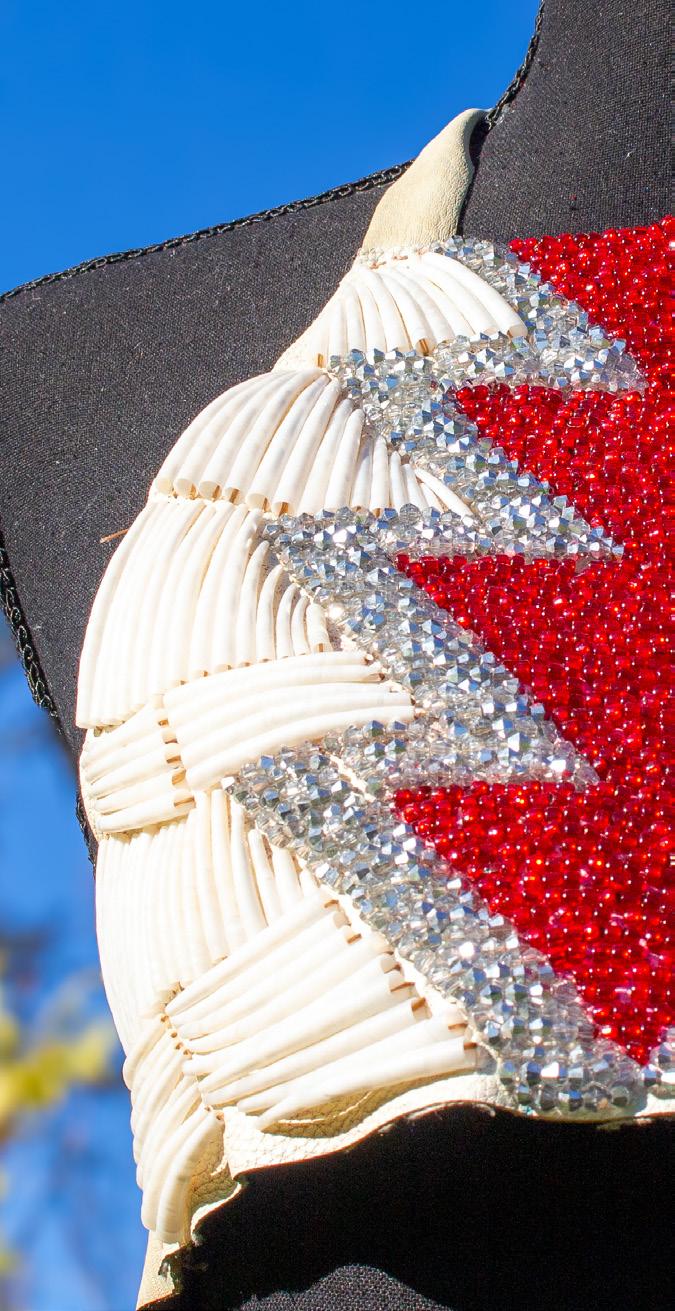



Diseñadora Yurok de joyería y moda local Escrito por Noelle Doblado y traducido por Georgina Munoz-Villanueva
Para Shoshoni Hostler, un simple pasatiempo se ha convertido en ver su trabajo artesanal rozar alfombras rojas y páginas de revistas. Hostler comenzó con el conocimiento de las prácticas indígenas y unas cuantas cuentas. Ahora tiene su propio negocio, donde elabora joyería artesanal personalizada y trajes tradicionales. Al crecer con su comunidad tribal en Humboldt, su identidad yurok la ha conectado con una realidad y un propósito que supera sus sueños.
“Mi trabajo significa algo más grande que yo misma”, dijo Hostler. “Significa representar a los pueblos indígenas y mostrar las variaciones de nuestras culturas”.
Aprendiendo de un elder yurok que dominaba el idioma, Hostler eligió el nombre Nar Rew Ekar, que significa “mis hermosas cuentas”, para capturar la esencia y los vínculos culturales con su marca. Mientras creaba su primera creación, un par de aretes de hierba del oso que no esperaba vender, la invadió el deseo de hacerse un hueco en la industria de la moda como diseñadora indígena.
“Creo que mi primera pieza tiene un gran significado para mí, porque fue un ejemplo de por qué pensaba que la moda indígena necesita representación, y se trata de una idea holística del bienestar y de lo que te pones en el cuerpo, y lo que te pones en el cuerpo importa”, dijo Hostler.
La madre de Hostler, una joyera indígena, se convirtió en el escalón de su trayectoria artística. Durante un período difícil, cuando su madre experimentó cirugías y complicaciones de salud, le transmitió su amor por la artesanía con cuentas. Antes de la serie de cirugías, escogía cuentas con la intención de dárselas a Hostler, ofreciéndole una vía de escape para distraerse mientras estaba sentada en las salas de espera del hospital. Este fue el momento en que Hostler encontró consuelo en la artesanía y una conexión con su madre en el momento en que más lo necesitaba.
“Ayuda a calmar la mente cuando tienes que concentrarte, e incluso si estás haciendo algo repetitivo, puede calmarla de verdad”, dijo Hostler. “Y saber que, al igual que mi madre me había regalado las cuentas, y que esto era lo que ella pensaba que haría mientras ella estuviera en el hospital, me ayudó a sumergirme en ello.”
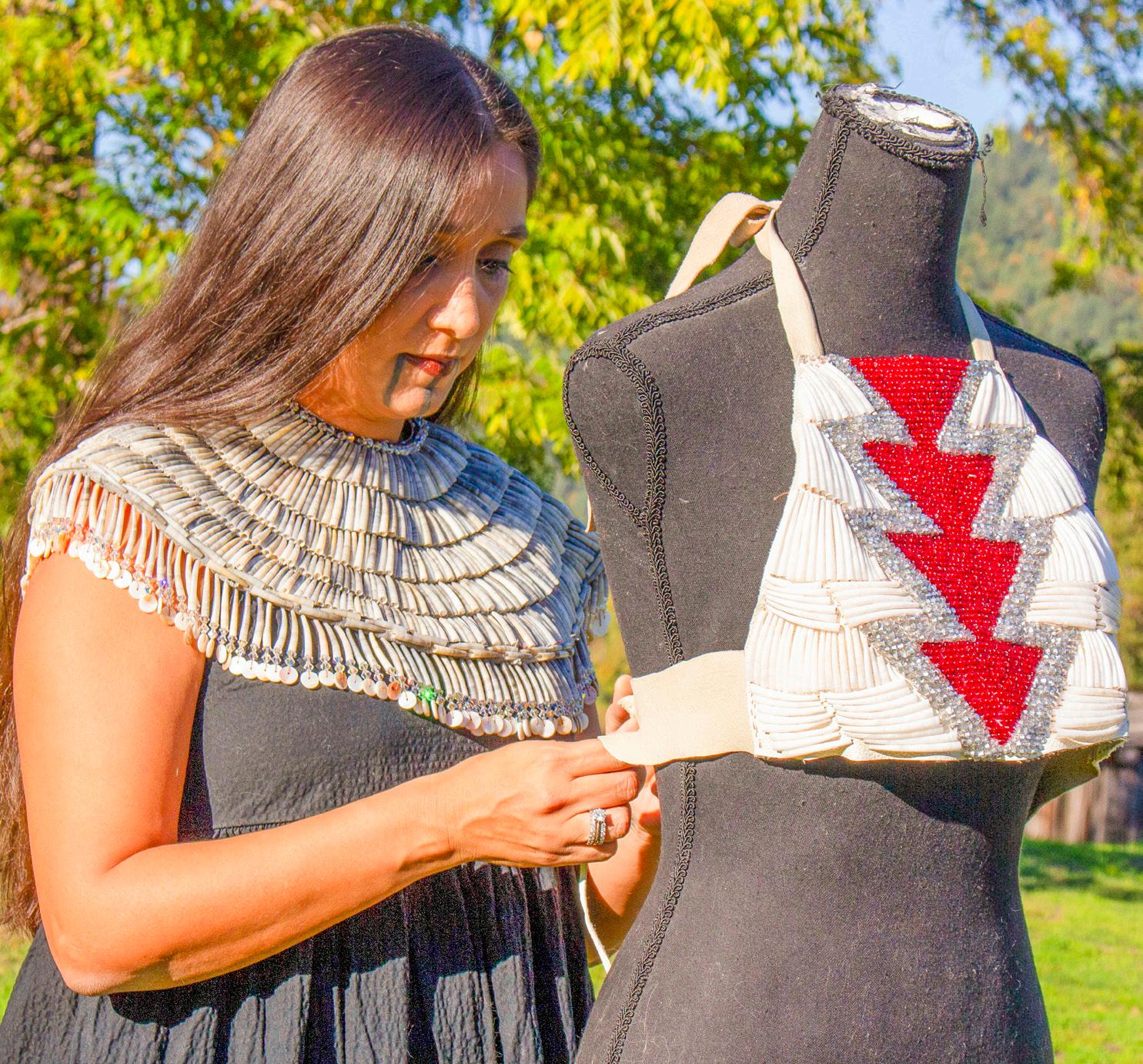
Joely Proudfit desempeñó diversos roles liderando iniciativas indígenas. Proudfit es consultora de medios y copropietaria de The Native Networkers, que proporciona recursos a las industrias del cine y la televisión para mejorar la comprensión y crear una representación auténtica de los pueblos indígenas. Mientras Proudfit desfilaba por las alfombras rojas de los estrenos de cine y televisión en Hollywood, lució con orgullo los diseños de Hostler.
"Shoshoni Hostler está haciendo algo esencial en la moda. Está centrando el diseño indígena de California en espacios que históricamente nos han excluido", dijo Proudfit. "He llevado sus piezas a importantes estrenos y eventos de moda porque su trabajo está profundamente arraigado en la tierra y en los materiales y tradiciones indígenas de California. No solo crea ropa hermosa, sino que crea piezas que reflejan miles de años de conocimiento y conexión con este lugar".
Proudfit ha sido fotografiada para la revista
Variety con un collar personalizado diseñado por Hostler y ha seguido luciendo su trabajo en la alfombra roja durante años. Rompiendo barreras en la industria con su arte, Proudfit sigue recurriendo a los diseños de Hostler.
“Shoshoni no sigue tendencias. Honra la tierra y nuestras tradiciones al crear algo completamente original”, dijo Proudfit. “Los diseñadores indígenas, especialmente aquellos que trabajan con tradiciones y materiales tribales específicos como ella, merecen estar a la vanguardia de la moda como innovadores, no como novedades”.
Poder crear con orgullo y formar parte del mundo de la moda es un logro no solo para ella, sino para quienes representa.
“Muchas veces, en la sociedad en general, la gente piensa que los nativos americanos no existen, que estamos extintos”, dijo Hostler. “Que no participamos en diálogos culturales ni en estos otros espacios, y de hecho sí lo hacemos. Y eso da voz a eso: que no somos una cultura muerta, sino una cultura viva. Somos creativos. Somos artistas.”
by Pamela Hernandez
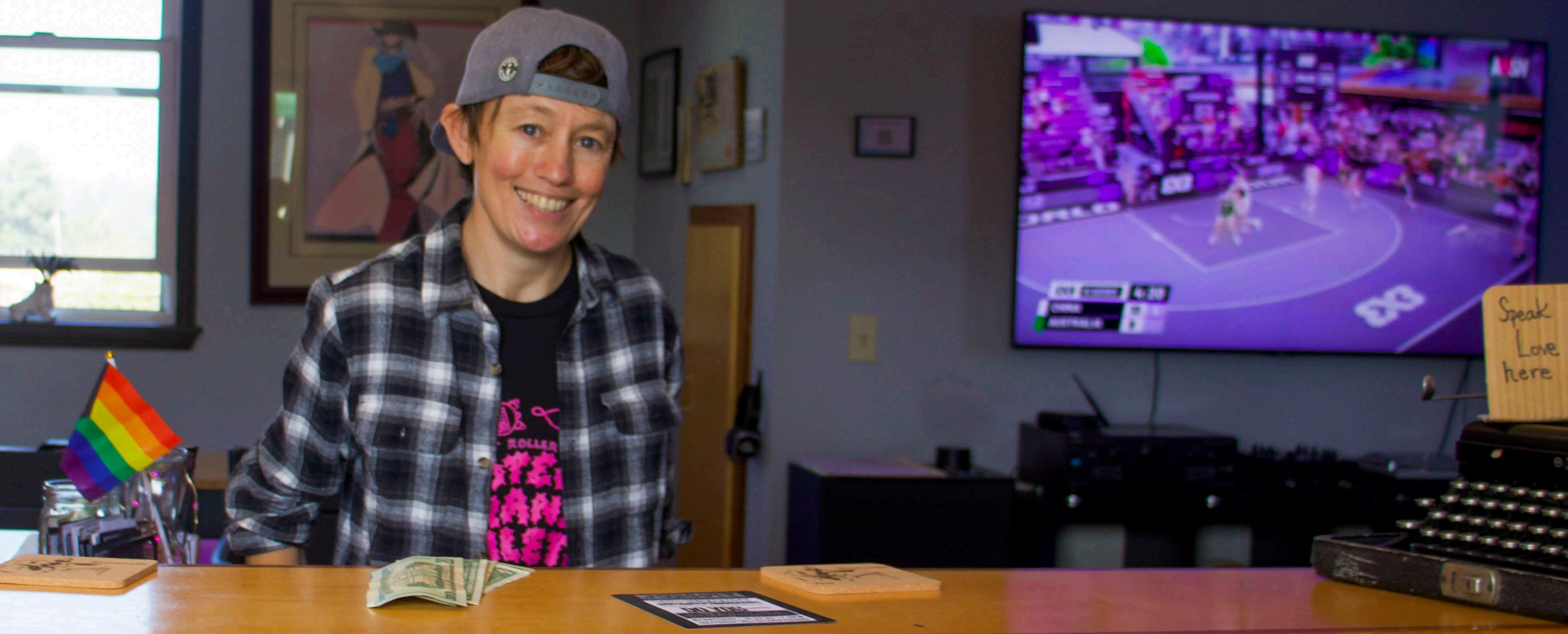
With a rooftop view overlooking Arcata, lively music and friendly smiles fill The Summitt as a place to wind down and have some fun. The Summitt’s purple parameter brings a pop of color to G street and is easy to spot.
Michelle “Trey” Cartier got their bachelors in art and film at Cal Poly Humboldt in 2001 and later became a film and art professor on campus. Mixing their different passions led to the creation of The Summitt, a women's sports bar featuring a digital art and film gallery. The Summitt was established in 2021 and they officially opened their doors, selling drinks in January 2023. Their intention of creating The Summitt
was to make an inclusive space for different communities to coexist.
Cartier blends different passions to inspire conversation amongst people from different walks of life.
“I'm a philosopher, a thinker that likes to just mix things that you don't usually think of mixing together to advocate for stronger human space, that in itself is abolition,” Cartier said.
The Summitt's name serves as a tribute to Pat Summitt, a famous women's college basketball coach who believed in excellence and reaching for your fullest potential. With this in mind, Cartier wants to center and empower trans athletes, women and the queer community.
“To be able to crossconnect, is a sense of real activism, really walking the talk, radical accountability, so if I have the opportunity to create this space, that's what I'm going to do,” Cartier said. “Also the luxury and the humble capability to mix these things, which I think are new spaces to mix humans that don't often mix.”
Cartier visions for The Summitt started in 2021, as a result of third spaces disappearing due to the pandemic. Their goal is to bring back queer third spaces where people can be humans in a space where they feel affirmed, elevated and inspired.
Attendee, Corrie Leyba, appreciated The Summitt’s inviting atmosphere at
one of their movie parties, showcasing “Jennifer’s Body”.
“Great vibes and owner is so nice and made us feel so welcomed,” Leyba said.
Whether you spend your time teck-decking, watching sports or laughing with friends, Cartier wants to ensure that everyone feels safe to be themselves. So kick back, relax and enjoy sipping on some cider, beer or a non-alcoholic drink while watching a game. The Summitt is located at 1507 G street and is open Fridays 4-8 p.m., Saturdays 12-8 p.m. and Sundays 12-6 p.m., but rest assured, if a game is still on, they're probably still open.
Escrito por Pamela Hernandez y traducido por Maryanne Casas-Perez
Con una vista desde la azotea que da a Arcata, música animada y sonrisas amistosas, The Summitt se presenta como un lugar ideal para relajarse y divertirse. El contorno morado del bar agrega un toque de color a la calle G y lo hace fácil de reconocer.
Michelle “Trey” Cartier obtuvo su licenciatura en arte y cine en Cal Poly Humboldt en 2001, y más tarde se convirtió en profesora de cine y arte en la misma universidad. La combinación de sus distintas pasiones llevó a la creación de The Summitt, un bar deportivo para mujeres que también funciona como galería digital de arte y cine. El proyecto fue establecido en 2021 y abrió oficialmente sus puertas —vendiendo bebidas— en enero de 2023. El objetivo de Cartier al crear The Summitt fue ofrecer un espacio inclusivo donde diferentes comunidades pudieran coexistir. Cartier mezcla sus intereses para inspirar conversaciones entre personas de diferentes épocas de la vida.
“Soy filósofa, pensadora, y me gusta combinar cosas que normalmente no pensarías en mezclar, para abogar por un espacio humano más fuerte; eso, en sí, es una forma de abolición,” dijo Cartier. El nombre The Summitt rinde homenaje a Pat Summitt, una famosa entrenadora de baloncesto universitario femenino que creía en la excelencia y en alcanzar el máximo potencial. Con esa inspiración, Cartier busca centrar y empoderar a las atletas trans, a las mujeres y a la comunidad queer.
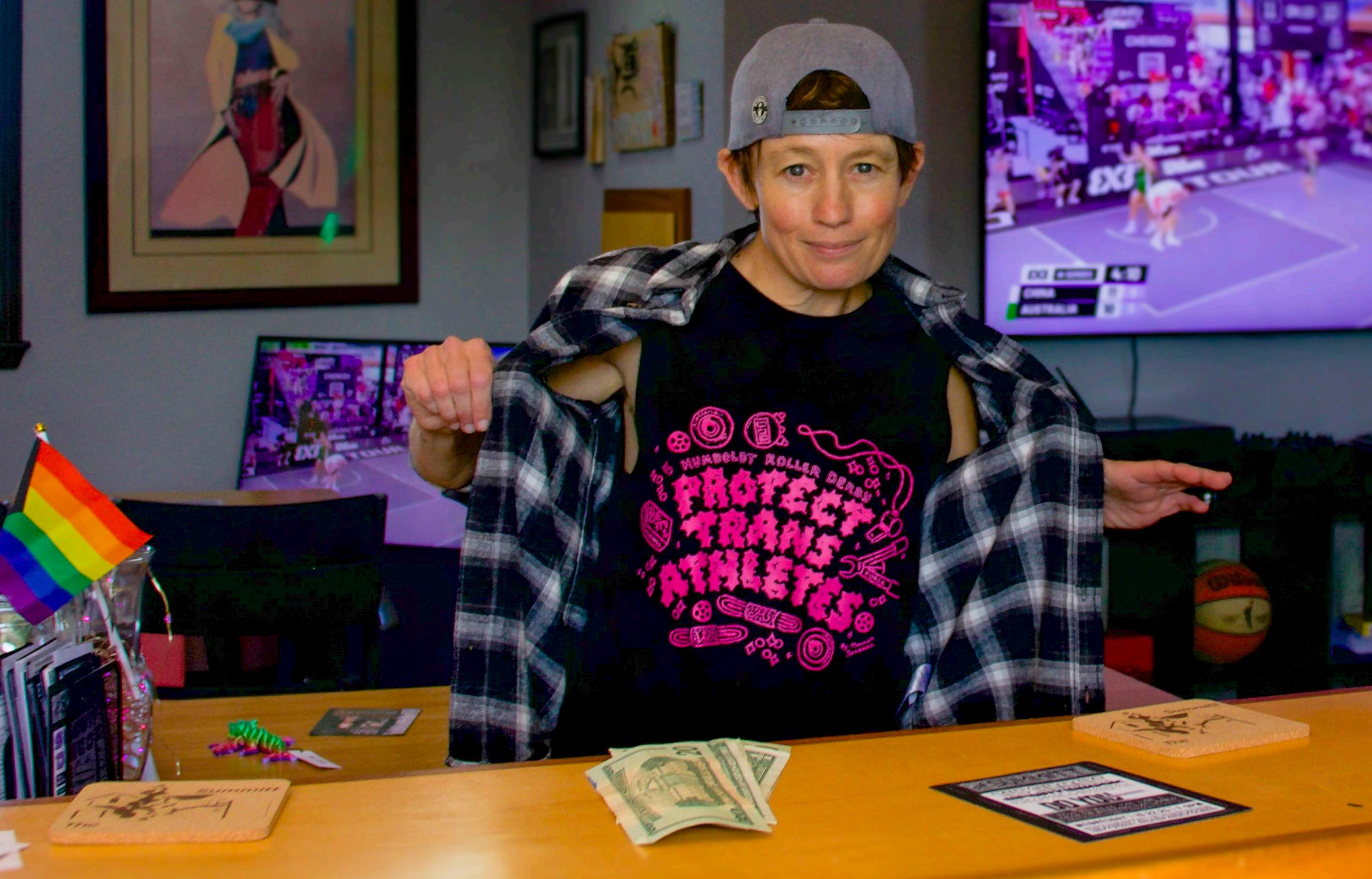
“Poder crear conexiones cruzadas es una forma real de activismo, de poner en práctica lo que se predica, una responsabilidad radical. Si tengo la oportunidad de crear este espacio, eso es lo que voy a hacer,” dijo Cartier. “También es un lujo y una capacidad humilde poder mezclar estas cosas, que creo que son nuevos espacios para reunir a humanos que normalmente no se mezclan.”
La visión de Cartier para The Summitt comenzó en 2021, como respuesta a la desaparición de los “terceros espacios” durante la
pandemia. Su objetivo es recuperar los espacios queer donde la gente pueda ser simplemente humana, en un ambiente donde se sientan reconocidos, elevados e inspirados.
La asistente Corrie Leyba apreció el ambiente acogedor de The Summitt durante una de sus noches de cine, en la que se proyectó Jennifer 's Body. “Gran vibra, y la dueña es muy amable; nos hizo sentir muy bienvenidos,” dijo Leyba.
Ya sea que pases el tiempo haciendo tech-deck, viendo deportes o riendo con tus amigos, Cartier
quiere asegurarse de que todos se sientan seguros para ser ellos mismos. Así que relájate y disfruta de una sidra, una cerveza o una bebida sin alcohol mientras ves un partido. The Summitt está ubicado en el 1507 de la calle G y abre los viernes de 4 a 8 p.m., los sábados de 12 a 8 p.m. y los domingos de 12 a 6 p.m. Pero no te preocupes: si el juego aún no ha terminado, probablemente el bar siga abierto.

Día de los Muertos is a two day celebration that honors the dead and the return of their spirits. This tradition is rooted in Indigenous practices taking place before the Spanish invasion. The celebration of death is viewed as a part of life, making this a special tradition for Native Americans and Latin America.
To welcome the spirits, a display called an ofrenda, is decorated with offerings that passed relatives enjoyed and symbolic offerings such as the four elements, water, candles representing fire, papel picado representing air and pan de muerto representing earth.
With this celebration around the corner, here are some ways you can honor traditions in new places!





































November 1| La Ciendita @ 11a.m-3p.m
Danza Azteca, Baile Folklorico, altares and more
2.
November 2 | Eureka Theatre @ 4-6 p.m
Danza Azteca, Catrinas, Mariachi, Teatro Del Pueblo and Folklorico
November 2| 605 6th St Arcata CA @ 6-8PM
Drag, drinks, food, and costume contest (Categories include: sexy, scary and funny)
November 14 | ATL @9PM
$10 early bird | $15 G.A
Dancers, live art, community offrenda, raffle and food (Proceeds go to Centro del Pueblo)
Oct 14 to Nov 2 | Los Bagels| Operating hours
Communal Offrenda| Drop off photos, candles, flowers or tokens
November 6| NHE 205 @ 3-4p.m
Talk about Dia De Los Muertos
7. Día De Los Muertos| El Centro
November 6| Kate Buchanan Room on Campus @5-7 p.m












Escrito por Pamela Hernandez y traducido por Salvador Sandoval-Garduno
El Día de los Muertos es una celebración de dos días que honra a los difuntos y el regreso de sus espíritus. Esta tradición tiene sus raíces en las prácticas indígenas que existieron antes de la invasión española. La celebración de la muerte se considera parte de la vida, haciendo esto una tradición especial para los nativos americanos y América Latina. Para dar la bienvenida a los espíritus, se decora un altar que se llama una ofrenda con ofrendas que disfrutaban los familiares difuntos y ofrendas simbólicas, como los cuatro elementos, agua, velas que representan el fuego, papel picado que representa el aire y pan de muerto que representa la tierra.
¡Con esta celebración a la vuelta de la esquina, aquí hay algunas maneras que puedes honrar las tradiciones en nuevos lugares!










(707)443-5021

English Express Empowered
otoño 2025
2 de SEPTIEMBRE11 de DICIEMBRE

englishexpressempowered.com
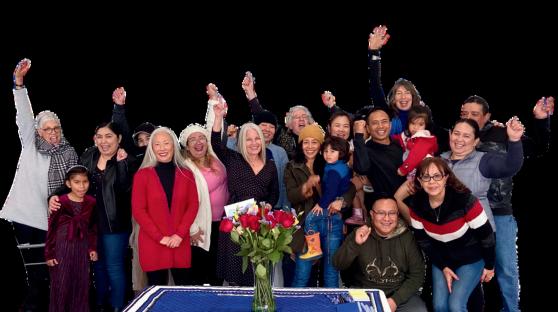

Los martes y jueves
Zoom ID 707-443-5021

Contraseña 464816
CLASES DE CIUDADANÍA EN PERSONA
Preparación para el examen de naturalización
EUREKA
Los lunes 6:00 - 7:30 pm
Centro comunitario de Jefferson
Sala 2, 1000 B Street
FORTUNA
Los jueves 6:00 - 7:00 pm
Iglesia Episcopal St. Francis Ferguson House, 568 16 Street th







EUREKA
Los miércoles 6:00 - 7:15 pm
Centro comunitario de Jefferson
Sala 2, 1000 B Street
FORTUNA
Los jueves 11:00 am - 12:00 pm
St. Francis Episcopal Church Salón
Comunitario 568 16 Street th
RIO DELL
Los sábados 11:30 am - 12:30 pm
Centro de recursos comunitarios de Rio Dell , 406 Wildwood Drive









Te ayudamos en todo tipo de transacciones inmobiliarias:
Compra y venta de: Casas, Terrenos, Apartamentos, Propiedades Comerciales y Negocios
Arrendamientos de Negocios
¡Su equipo de confianza en bienes raíces sirviendo a la comunidad hispana de Humboldt por más de 20 años!
Llámanos hoy para una consulta gratuita y personalizada
Visítanos en # 637 F Street, Arcata
707-616-9411
www.norcalcasasrealty.com
DRE# 01495444

@NorCal Casas


I saw “One Battle After Another” on Thursday night of opening week (Sept. 25) at the Minor Theatre at Arcata. It was a packed, sold out theatre, and everyone in the crowd was excited to see a film that was partially shot in Humboldt County. The times that we got represented on screen being Eureka High School, Murphy’s Market and Raliberto’s, drew loud applause and cheering from the audience.
This has become my favorite film of the year. The genre is described as an action thriller, which it is, but to me at its core, this movie is a dark satirical comedy. “One Battle After Another” is about a group of revolutionaries named the French 75 who release immigrants from detention centers, rob banks, and blow stuff up. However, as they grow older, go into hiding or get caught, the concept of how they fight back begins to evolve. What are they fighting for? This is the question I felt was intentionally unanswered in all of the different storylines.
We know who they are fighting against. The main villain throughout the film is Lockjaw, who is a military leader with complicated issues with race to say the least. He seems to be a representation of white nationalism in the U.S. government. The ensemble cast does an amazing job of executing the tone of the film. I laughed so hard at many of the lines and interactions between the characters. In the next moment, I would be tearing up at what was happening on screen.
My favorite character from this movie is Sergio, who is played by the wonderful Benicio Del Toro. He is a karate teacher and community leader who has built many relationships in his community in the interest of protecting the people. The reason I love Sergio is because he is a representation for the necessity of respite when being a freedom fighter. His presence on screen helped me breathe for a second and relax, while all the craziness was happening on screen. He introduces family and community members with a calm demeanor while chaos and violence surrounds him.
At one of the most important points of the movie, the fictional city of Baktan Cross is attacked for being a sanctuary city under false pretenses. This moment to me was a chilling reminder of the harsh political climate we are currently enduring. Sometimes, living in
Arcata, which is a sanctuary city, makes me feel safe. Other times however, it makes me wonder if this label makes us target under the current administration. So many different people fought so hard for this designation in the hopes of protecting our community.
This sentiment ties in perfectly with the theme of this film. How do we fight against these systems of power and oppression that are seemingly unstoppable? I don’t have an answer and neither does this movie. Ultimately, I feel like this amazing piece of art shows us the ups and downs of being hopeful. To feel optimistic about our future in this day and age is just a commitment to getting your heart broken. Solidarity is how we will survive as we enter this era of facing one battle after another.
¿Cómo luchamos?: Reseña de “One Battle After Another”
Vi “One Battle After Another” el jueves por la noche de su semana de estreno (25 de septiembre) en el teatro Minor de Arcata. La sala estaba llena, con todas las entradas agotadas, y el público estaba emocionado por ver una película que fue filmada parcialmente en el condado de Humboldt. Cada vez que aparecían lugares reconocibles —la preparatoria Eureka High School, el mercado Murphy’s Market y Raliberto’s— la audiencia estallaba en aplausos y vítores. Esta se ha convertido en mi película favorita del año. El género se describe como acción y suspenso, y aunque lo es, en su esencia la considero una comedia oscura y satírica. “One Battle After Another” trata de un grupo de revolucionarios llamado French 75, que libera inmigrantes de centros de detención, roba bancos y hace explotar cosas. Sin embargo, a medida que envejecen, se esconden o son capturados, la forma en que luchan comienza a transformarse. ¿Por qué luchan? Esa es la pregunta que, en mi opinión, la película deja deliberadamente sin respuesta a lo largo de las distintas tramas.
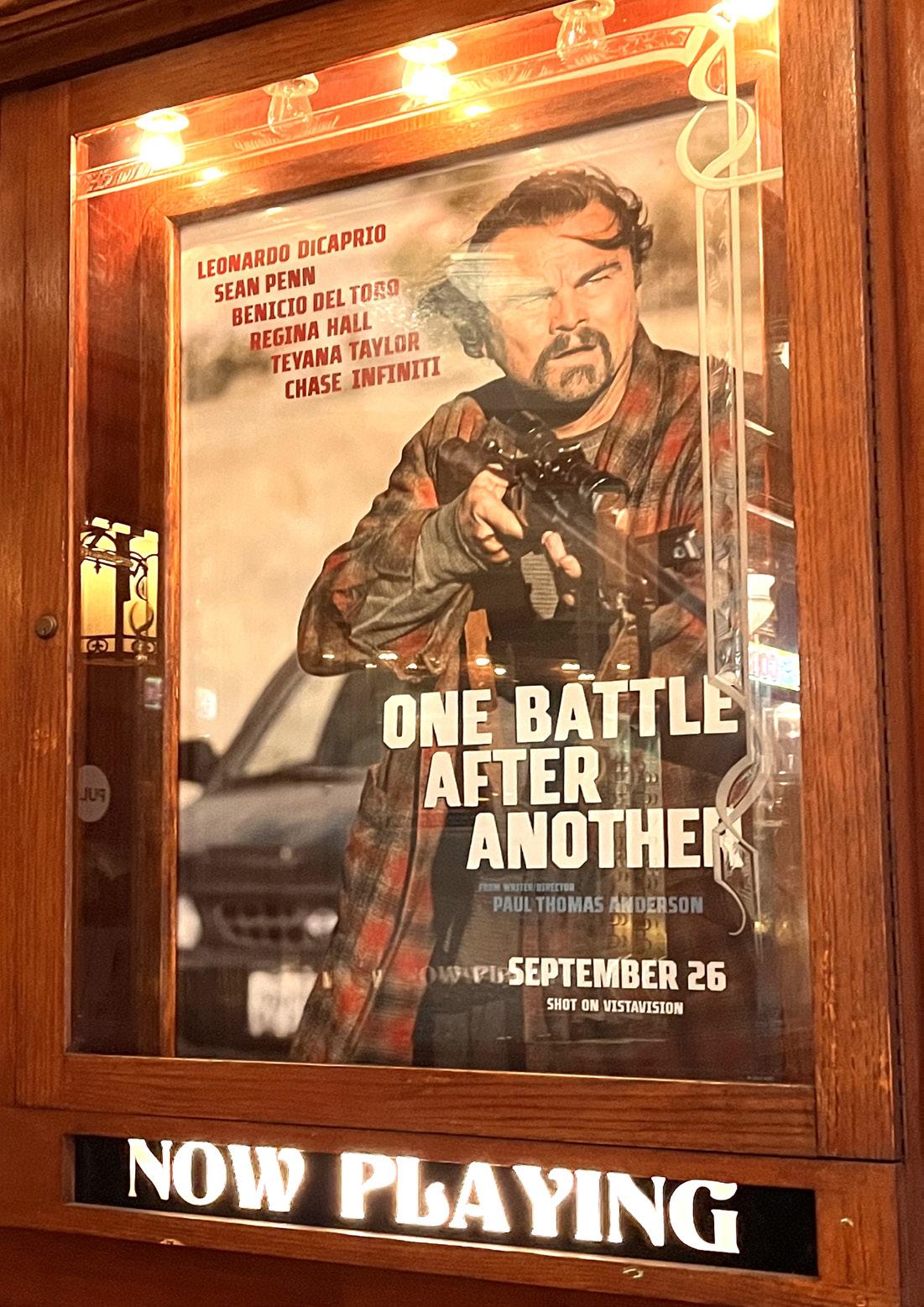
Sabemos contra quién luchan. El principal villano durante toda la película es Lockjaw, un líder militar con una relación muy conflictiva con el tema racial, por decir lo menos. Él parece representar al nacionalismo blanco dentro del gobierno estadounidense. El
elenco hace un trabajo increíble al ejecutar el tono del filme. Me reí a carcajadas con muchas de las líneas y las interacciones entre los personajes. Y al momento siguiente, me encontraba con lágrimas en los ojos por lo que sucedía en pantalla. Mi personaje favorito es Sergio, interpretado por el maravilloso Benicio del Toro. Es un maestro de karate y líder comunitario que ha forjado muchas relaciones en su comunidad con el propósito de proteger a la gente. Me encanta Sergio porque representa la importancia del descanso y la calma dentro de la lucha por la libertad. Su presencia en pantalla me permitió respirar por un instante y relajarme mientras todo el caos se desenvuelve a su alrededor. Presenta a sus familiares y miembros de la comunidad con una serenidad impresionante, aun cuando la violencia y el desorden los rodean. En uno de los momentos más importantes de la película, la ciudad ficticia de Baktan Cross es atacada bajo falsos pretextos por ser una “ciudad santuario”. Para mí, esa escena fue un recordatorio estremecedor del tenso clima político que vivimos hoy. A veces, vivir en Arcata —también una ciudad santuario— me hace sentir seguro. Pero en otras ocasiones, me pregunto si esta etiqueta nos convierte en un blanco bajo la administración actual. Mucha gente luchó con todas sus fuerzas para conseguir esa designación con la esperanza de proteger a nuestra comunidad. Este sentimiento encaja perfectamente con el tema de la película. ¿Cómo luchamos contra estos sistemas de poder y opresión que parecen imposibles de detener? No tengo una respuesta, y esta película tampoco la ofrece. En última instancia, siento que esta increíble obra de arte nos muestra los altibajos de mantener la esperanza. Ser optimista sobre nuestro futuro en esta época es, de alguna forma, comprometerse a que te rompan el corazón. La solidaridad es la única manera de sobrevivir mientras entramos en esta era de enfrentar una batalla tras otra.


POZOLE . PAMBAZO . POLLO A LA CREMA . HUARACHES MOLCAJETE . MENUDO . Y MÁS
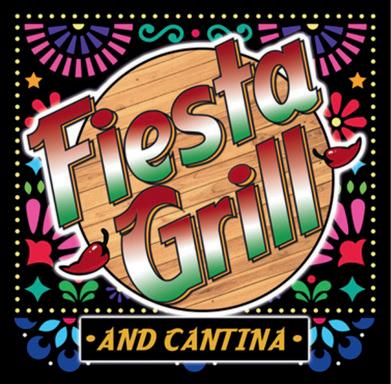

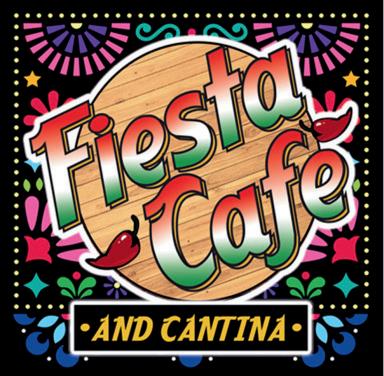
HAPPY HOUR M-F, 5-6 PM O IT S
Be apart of an award winning magazine. All majors welcomed!
325 T/TH 1-2:50pm 2 units Be part of an award winning magazine! T/Th 1-2:50 2 units




¿Por qué ser parte de la comunidad Co-op?
¿Por qué ser parte de la comunidad Co-op?
¡Amamos la buena comida! Tenemos la mejor y más deliciosa selección de alimentos naturales en Humboldt.
¡Somos de nuestros socios! Los socios pueden votar en elecciones y recibir beneficios increíbles.
¡Somos un excelente lugar para trabajar! Puestos sindicalizados y beneficios de calidad.
¡Apoyamos a los negocios locales! Nos enfocamos en ayudar a que nuestra comunidad prospere.
¡Priorizamos la sostenibilidad! Siempre lo hemos hecho y siempre lo haremos.
Nuestro Triple Impacto: Gente, Planeta, Ganancias
811 I St. Arcata & 25 4th St. Eureka Lunes a Domingo
7:00AM - 9:00PM
OOO you want to join associated students so bad!


If you are committed to advocating for students, this may be the job for you!

by Jessica de Laguna
Life can be stressful, and juggling school, work and relationships can make it hard for one to prioritize their health. But, what if some of the biggest risks to your future wellbeing started in childhood?
According to Humboldt County’s Community Health Improvement Plan (CHIP) for 2022–2027 and the 2022 Community Health Assessment Enhancement, many chronic conditions, including diabetes, are linked to Adverse Childhood Experiences (ACEs). This includes poverty, neglect and family instability. The reports also highlight how food insecurity, trauma and structural racism contribute to higher diabetes risk, especially among Latine and Indigenous communities.
Humboldt County Health Officer, Dr. Candy Stockton, shares how your past doesn’t have to define your future and ways to take charge of your own health.
“ACEs, like the loss of a parent, household stress related to substance use or poverty, and physical or emotional neglect or abuse, are unfortunately common,” Stockton
said. “Racism and historical trauma are another source of childhood stress, although they aren’t in the official ACEs list. People who grew up experiencing ACEs have a higher risk of developing chronic diseases, mental health conditions and substance use disorders. It’s important to remember that an increased risk doesn’t mean there’s nothing you can do or that it will happen to you.”
Dr. Stockton recommends four healingcentered steps to help prevent diabetes and promote overall well-being:
These connections can act as a buffer against the long-term effects of early life stress.
“Being part of a supportive community and building positive relationships can help reduce those risks,” Stockton said.
Just moving your body consistently or choosing to sit less makes a big difference.
“Making small changes, like getting
exercise every week and cutting back on sodas, sugary drinks, caffeine, tobacco and alcohol can all help lower your risk, even if you aren’t perfect at it,” Stockton said.
Mental health challenges are linked to chronic disease risk, and addressing them early can make a big difference.
“Being willing to ask for help if you are experiencing anxiety or depression is also important,” she said.
Even if life has been difficult, small steps toward healing can have a big impact. Taking care of your mind, body and relationships is one of the most powerful ways to protect your health.
“Working with your health care provider to manage your condition, if you develop a chronic disease like diabetes or high blood pressure, can help you live a long, healthy life,” Stockton said.
Your past doesn’t define your health, but your choices today do.
Charla
Escrito por Jessica de Laguna y traducido por Salvador Sandoval-Garduno
La vida puede ser estresante, y hacer malabarismos con los estudios, el trabajo y las relaciones puede dificultar que uno dé prioridad a su salud. Pero, ¿qué pasa si algunos de los mayores riesgos para tu bienestar futuro empezaron en la niñez?
De acuerdo al Community Health Improvement Plan (CHIP) del Condado de Humboldt para 2022-2027 y el Community Health Assessment Enhancement de 2022, muchas enfermedades crónicas, incluida la diabetes, están vinculadas a las Experiencias Infantiles Adversas (ACEs). Esto incluye la pobreza, la negligencia y la inestabilidad familiar. Los reportes también destacan cómo la inseguridad de comida, trauma y el racismo estructural contribuyen a un mayor riesgo de diabetes, especialmente entre las comunidades latine y indígenas.
La Oficial de Salud del Condado de Humboldt, Dra. Candy Stockton, comparte que
tu pasado no tiene por qué definir tu futuro y formas de tomar control sobre tu propia salud.
“Las ACEs, como la pérdida de un padre, estrés doméstico relacionado con el uso de sustancias o pobreza, y el descuido o abuso físico o emocional, son, lamentablemente, comunes,” dijo Stockton.
“Racismo y el trauma histórico son otra fuente de estrés de niñez, aunque no están en la lista oficial de ACE. Personas que crecieron experimentando ACEs tienen un mayor riesgo de desarrollar enfermedades crónicas, condiciones de salud mental y desórdenes de uso de sustancias. Es importante que un mayor riesgo no significa que no hay nada que puedas hacer o que te vaya a pasar a ti.”
Dra. Stockton recomienda cuatro pasos centrados en la cicatrización para ayudar a prevenir la diabetes y promover el bienestar general.

Estas conexiones pueden actuar como un amortiguador contra los efectos a largo plazo del estrés en la niñez.
“Siendo parte de una comunidad solidaria y construyendo relaciones positivas puede ayudar a reducir esos riesgos,” dijo Stockton.
Solo con mover tu cuerpo consecuentemente o decidiendo sentarse menos puede hacer una gran diferencia.
“Haciendo pequeños cambios, como haciendo ejercicio cada semana y recortando sodas, bebidas azucaradas, cafeína, tabaco y alcohol, todos pueden ayudar a reducir el riesgo, aunque si no eres perfecto en ello,” dijo Stockton.
Los retos de salud mental están vinculados al riesgo de enfermedades crónicas, y atenderlos temprano puede hacer una gran diferencia.
“Estando dispuesto a pedir ayuda si sufras de ansiedad o depresión también es importante,” ella dijo.
Aunque la vida haya sido difícil, los pasos pequeños hacia la cicatrización pueden tener un gran impacto. Cuidando tu mente, cuerpo y relaciones es una de las formas más poderosas de proteger tu salud.
“Trabajando con tu proveedor de servicios médicos para controlar tu condición, si desarrolla una enfermedad crónica como diabetes o alta presión, puede ayudarle a vivir una vida larga y saludable,” dijo Stockton.
Tu pasado no define tu salud, pero tus decisiones de hoy sí.

by Kasandra Arreola
“What’s your sign?” This is a question we often get asked whether on a first date, while in line for the girl’s bathroom or as an icebreaker in class. In my experience, it usually follows with “But I don’t know much about that zodiac stuff.” Even so, astrology has undeniably woven itself into everyday life and we likely all know what sign our birthday falls under.
There are endless apps to read your horoscope and videos to doom scroll on TikTok and Instagram for answers on how retrogrades affect us and the significance behind eclipses. In a world powered by data, logic and science, why do so many of us still look to the stars for answers?
There’s something undeniably comforting to me about astrology. Even if it’s not scientifically valid, it can be emotionally useful. That’s how I first got into it. I wasn’t always content with what I read about my sign, but reading about how Aquarius’ can be
stubborn, emotionally detached and extremely independent individuals prompted me to ask if these claims were true.
I think the simple answer is pure comfort. The same way we flip a coin for an answer, or shake up a Magic 8 Ball, we are seeking answers to what we want to questions we don’t know how to answer ourselves. Astrology has been around for thousands of years, dating back to the ancient Mesopotamia according to Susan Miller, author of “Planets and Possibilities.” Its longevity might say less about the stars and more about us. Life is full of uncertainty — shifting majors, changing relationships and endless “what’s next?” questions. Reading horoscopes or comparing birth charts can feel grounding, a way to make sense of the chaos. Whether you’re a believer in the stars or not, astrology also gives us something to talk about. You can bond with someone instantly
by asking their sign, even if it’s just to jokingly blame their indecisiveness on being a Libra.
Of course, there is skepticism when it comes to relying on stars and planets. Many are convinced that astrology does not deserve any serious attention. People tend to think horoscopes are too vague and some put it off as a simple cosmic coincidence. Science has repeatedly debunked the idea that positions of stars influence our personalities or fate. Here’s the thing — astrology is not a science, but a pseudoscience. This means that there is no actual scientific proof that backs astrology. Skeptics may argue that treating astrology as truth can be harmful, especially if people let it dictate real decisions. “I can’t date Sagittarius’ because they can’t settle down” might be funny or even relatable to some, but using zodiac stereotypes to judge people (or yourself) can box you in more than it frees you.

Astrology isn’t always about predicting the future, but about giving shape to the present. It’s an imaginative structure for introspection and a poetic way to think about who we are and who we want to be.
Probably not, but astrology doesn’t have to be a science to be meaningful. Similar to art or music, it offers perspective, not proof. I see it as spiritual guidance. To me, it reflects something fundamentally human — our need to find patterns, stories, and significance in the world around us.
While I do read my birth chart more often than I check my emails, I use it as a simple way to dissect the world and my own impact in it. So, the next time you check your horoscope before an exam or blame your bad day on the stars, remember: maybe it’s not about believing, maybe it’s about wondering.
Escrito por Kasandra Arreloa y traducido por Maryanne Casas-Perez
“¿Cuál es tu signo?” Es una pregunta que a menudo nos hacen, ya sea en una primera cita, mientras esperamos en la fila del baño de mujeres o como rompehielos en clase. En mi experiencia, casi siempre va seguida de un “pero no sé mucho de eso del zodiaco”. Aun así, la astrología se ha entrelazado innegablemente con la vida cotidiana, y es probable que todos sepamos bajo qué signo cae nuestro cumpleaños.
Existen infinitas aplicaciones para leer tu horóscopo y videos en TikTok o Instagram que nos mantienen desplazándonos sin fin en busca de respuestas sobre cómo los retrógrados nos afectan o cuál es el significado detrás de los eclipses. En un mundo impulsado por los datos, la lógica y la ciencia, ¿por qué tantos seguimos mirando a las estrellas en busca de respuestas? Hay algo innegablemente reconfortante en la astrología. Aunque no sea científicamente válida, puede ser emocionalmente útil.

Así fue como me empecé a interesar en
ella. No siempre me gustaba lo que leía sobre mi signo, pero leer que los Acuario pueden ser tercos, emocionalmente desapegados y extremadamente independientes me hizo preguntarme si esas afirmaciones eran ciertas.
Creo que la respuesta simple es la comodidad. De la misma forma en que lanzamos una moneda para obtener una respuesta o agitamos una Bola 8 Mágica, buscamos respuestas a preguntas que no sabemos cómo contestar por nuestra cuenta. La astrología existe desde hace miles de años, remontándose a la antigua Mesopotamia, según Susan Miller, autora de Planets and Possibilities. Su longevidad quizá diga menos sobre las estrellas y más sobre nosotros.
La vida está llena de incertidumbre: cambiar de carrera, modificar relaciones y enfrentarse a infinitos “¿y ahora qué?”. Leer horóscopos o comparar cartas natales puede hacernos sentir con los pies en la tierra, como una forma de darle sentido al caos.
Tanto si crees en las estrellas como si no, la astrología también nos da algo de qué hablar.
Puedes conectar con alguien al instante al preguntarle su signo, aunque solo sea para bromear sobre su indecisión por ser Libra.
Por supuesto, existe escepticismo cuando se trata de confiar en los astros y los planetas. Muchos están convencidos de que la astrología no merece atención seria. La gente suele pensar que los horóscopos son demasiado vagos, y algunos lo consideran una simple coincidencia cósmica. La ciencia ha refutado repetidamente la idea de que las posiciones de las estrellas influyen en nuestra personalidad o destino.
He aquí el asunto: la astrología no es una ciencia, sino una pseudociencia. Esto significa que no hay pruebas científicas reales que la respalden.
Los escépticos podrían decir que tratar la astrología como verdad puede ser dañino, especialmente si la gente deja que dicte decisiones reales. “No puedo salir con Sagitarios porque no se comprometen” puede sonar gracioso o incluso identificable, pero usar estereotipos zodiacales para juzgar a otros (o a uno mismo) puede limitarte más de lo que te libera.

La astrología no siempre trata de predecir el futuro, sino de darle forma al presente. Es una estructura imaginativa para la introspección y una forma poética de pensar en quiénes somos y quiénes queremos ser.
Probablemente no, pero la astrología no necesita ser una ciencia para tener significado. Al igual que el arte o la música, ofrece perspectiva, no pruebas. Yo la veo como una guía espiritual. Para mí, refleja algo fundamentalmente humano: nuestra necesidad de encontrar patrones, historias y significado en el mundo que nos rodea. Aunque leo mi carta natal más a menudo que reviso mis correos electrónicos, la utilizo como una forma sencilla de analizar el mundo y mi propio impacto en él. Así que, la próxima vez que revises tu horóscopo antes de un examen o culpes a las estrellas por tu mal día, recuerda: tal vez no se trate de creer, sino de maravillarse.


By Michael Daniel Rivas Romero, College of the Redwoods, Undeclared
Green leaf, look upon your yellowing sibling with confidence and trust.

Your cousin orange leaf is looking more red these days and they need bright spirits as they brown, and begin to fall.
Looking down, atop a mighty tree is misconceiving. The cracked and broken leaves are not black sheep. As worms and beetles chew them up and spit them out they become the very life this tree gives you.

By Matthew Babcock, Cal Poly Humboldt, English major

Tip tap, tip tap.
Raindrops on my window.
Tip tap, tip tap.
Cold is leaking in.
From my cozy slumber, I exit.
A banana slug greets me
On my window pane.
It’s a good morning for rain.
Tip tap, tip tap.
A shower will do me good.
Tip tap, tip tap.
Warmth is leaking in.
From my warm bathroom, I exit.
The banana slug is blocked By fog on my window.
It’s a good morning for a shower.
Tip tap, tip tap.
Raindrops as I leave the house.
Tip tap, tip Squeltch!
It’s a bad morning for Banana Slug.
By Ashton Lucas Leonardo Perfecto, Cal Poly Humboldt, Oceanography major
Monday nights from seven to nine. I scuff across the floor and begin fatigued. I burn and sweat for two hours and I walk home radiating red hot, evaporating in the dark, blinded by beamers dawning over the hills, invigorated by absolute madness.
I have to be exactly what I could be.
Quick and singular slip-ups on footwork send me into seconds of mania, some kind of guilt, and I must stop my hands from breaking fingers or singing some song of rage beneath the music while the nail-crusted beat goes on without me. The floor is shaking. I could be one of the drums, but I started the sequence on the wrong foot. I believe I could be good. So then, bullseye.
I will be exactly what I could be.
You are now an “experienced dancer.” Do not compare to the periphery. Eyes on me. You will roll your shoulders back. You will outstretch your neck. You will begin before the music floods in. You are one of the drums. You will be something to be proud of. In February, the lights will black out the theatre. Your father will cry out and call you "happy feet."
I want to be anything that I could be.
Escrito por Michael aniel i as omero, College o the edwoods, carrera no declarada
o a verde, mira a tu hermana amarillenta con confian a fe. Tu prima, la ho a naran a, se ve más ro a estos días, necesita buen ánimo mientras se marchita comien a a caer. irar hacia aba o desde lo alto del árbol puede engañar.
Las ho as agrietadas rotas no son ove as negras. ientras los gusanos escaraba os las mastican las devuelven a la tierra, se convierten en la vida misma que este árbol te ofrece.
Escrito por Matthew Babcock, Cal Poly Humboldt, especialidad en Inglés
Tac, tac, tac, tac. Las gotas de lluvia en mi ventana. Tac, tac, tac, tac. El frío se cuela dentro.
De mi sueño acogedor, despierto. Una babosa de plátano me saluda en el cristal de la ventana. Es una buena mañana para la lluvia.
Tac, tac, tac, tac. Una ducha me sentará bien. Tac, tac, tac, tac. El calor se filtra hacia mí.

Escrito por shton ucas eonardo Per ecto, Cal Poly Humboldt, especialidad en ceanogra a
Lunes por la noche, de siete a nueve. rrastro los pies por el suelo sintendome cansado. rdo sudo durante dos horas, camino a casa irradiando ro o fuego, evaporándome en la oscuridad, cegado por los faros que nacen sobre las colinas, vivificado por una absoluta locura.
Tengo que ser e actamente lo que podría ser. equeños singulares tropie os en el uego de pies me lan an a segundos de locura, una especie de culpa, debo impedir que mis manos rompan dedos o que entonen una canci n de rabia ba o la m sica, mientras el ritmo, con sus uñas desgastadas, contin a sin mí.
El suelo tiembla. odría ser uno de los tambores, pero comenc la secuencia con el pie equivocado. reo que podría ser bueno. Entonces, usto en el blanco.
er e actamente lo que podría ser.
De mi baño tibio, salgo. La babosa de plátano queda oculta tras el vaho en mi ventana. Es una buena mañana para una ducha.
De mi baño tibio, salgo. La babosa de plátano queda oculta tras el vaho en mi ventana. Es una buena mañana para una ducha.
Tac, tac, tac, tac. Gotas de lluvia al salir de casa. Tac, tac, ¡squish!
Es una mala mañana para la babosa de plátano.



hora eres un bailarín con e periencia. o mires a los lados. os en mí.
Echarás los hombros hacia atrás. Estirarás el cuello. Empe arás antes de que la m sica inunde el aire. Eres uno de los tambores. erás algo de lo cual estar orgulloso. En febrero, las luces apagarán el teatro.
Tu padre gritará te llamará pies felices. uiero ser cualquier cosa que podría ser.


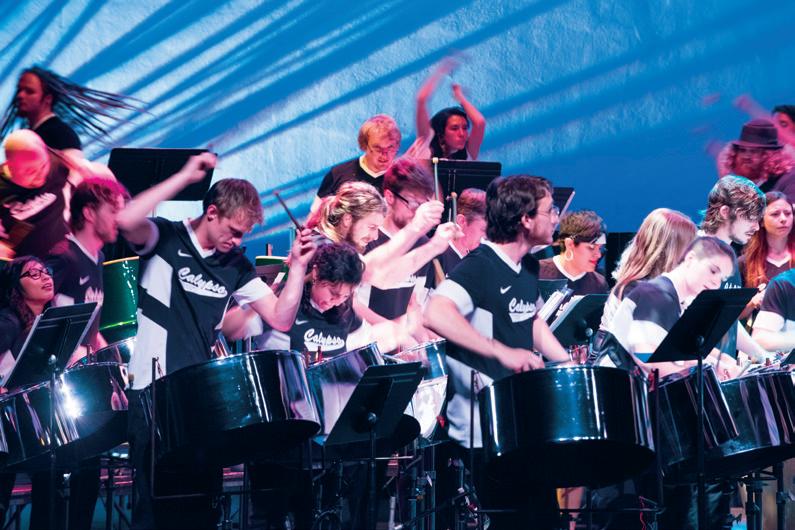



Masters of the Steel
MAY 2
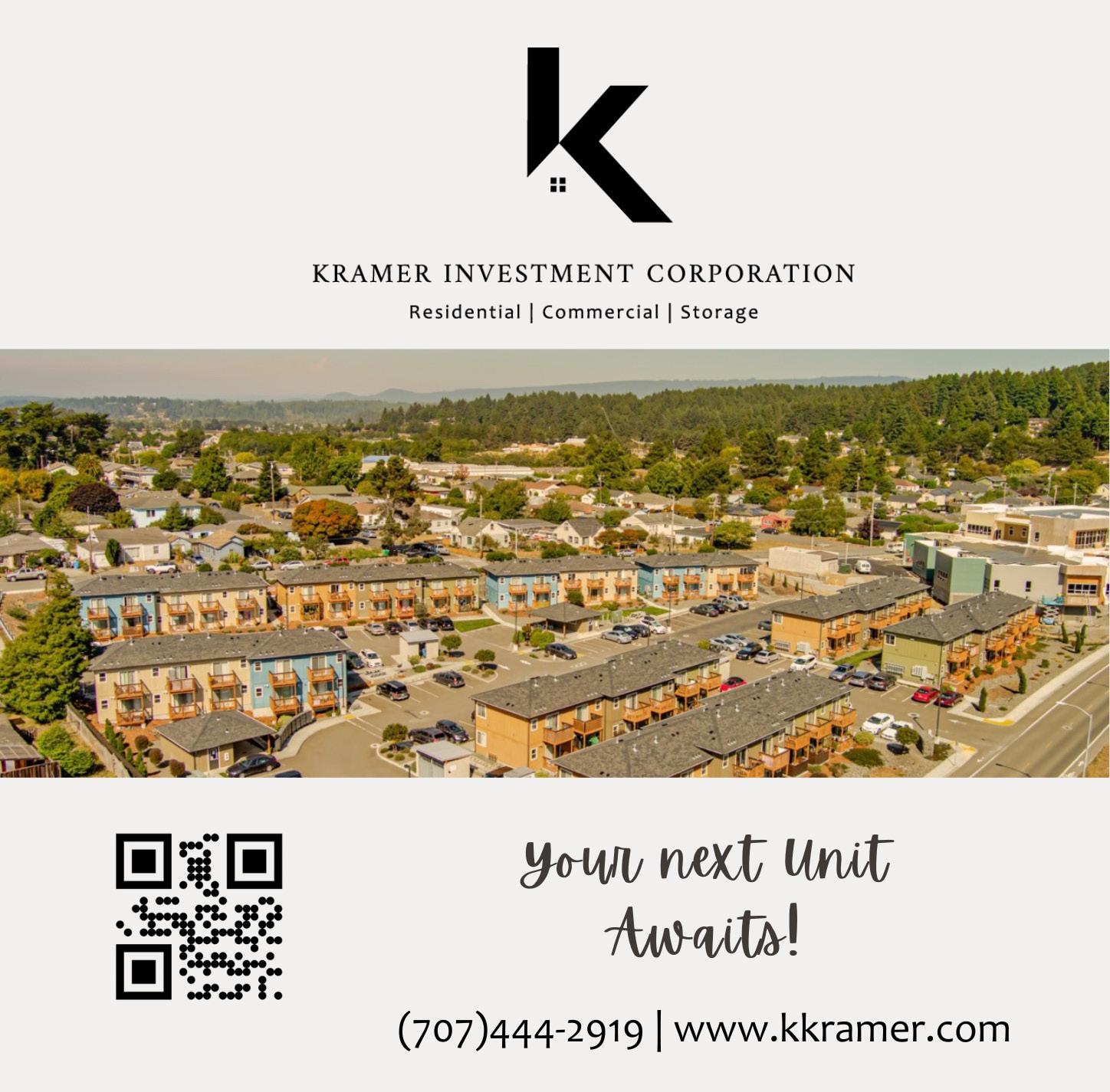




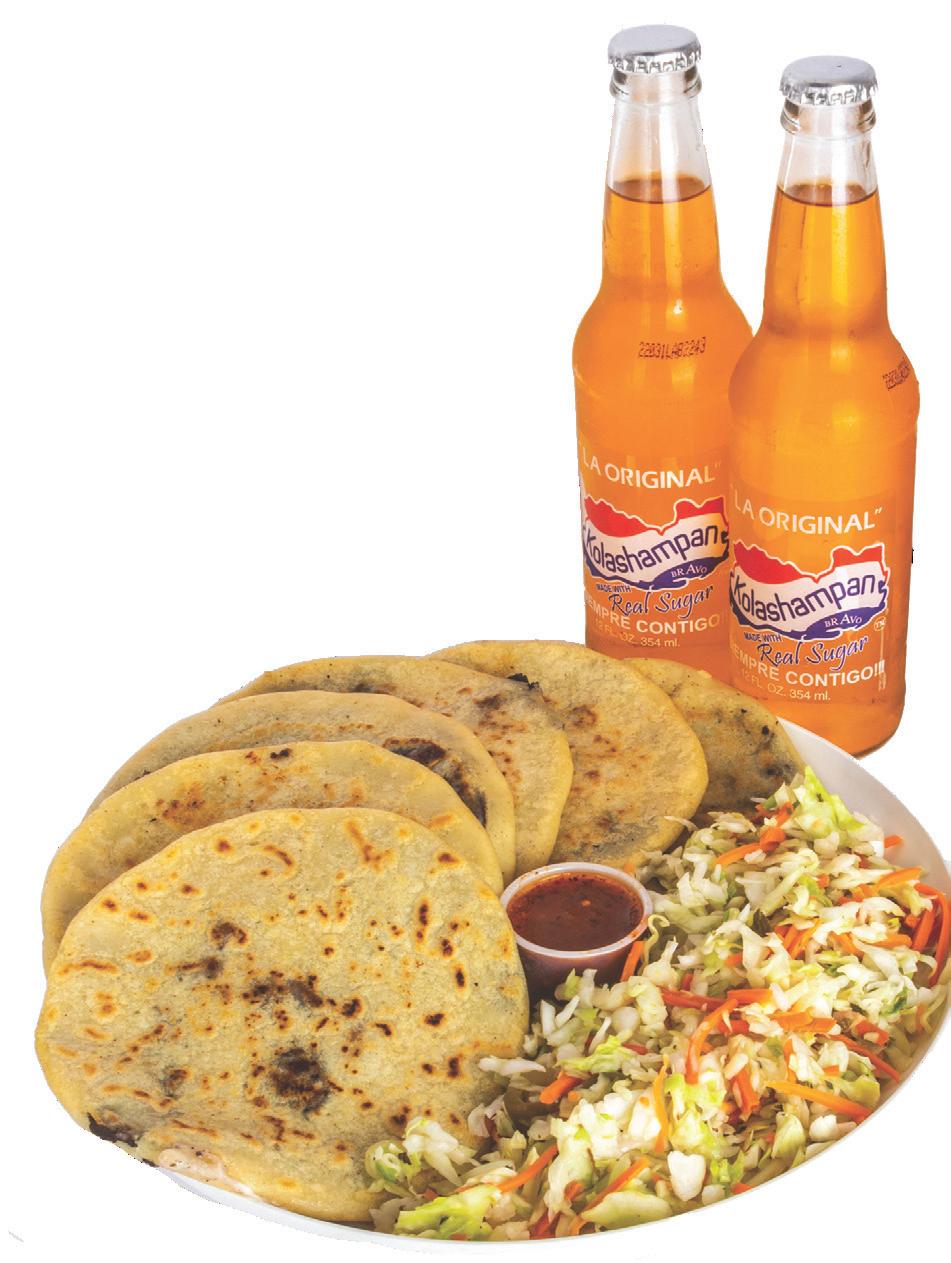

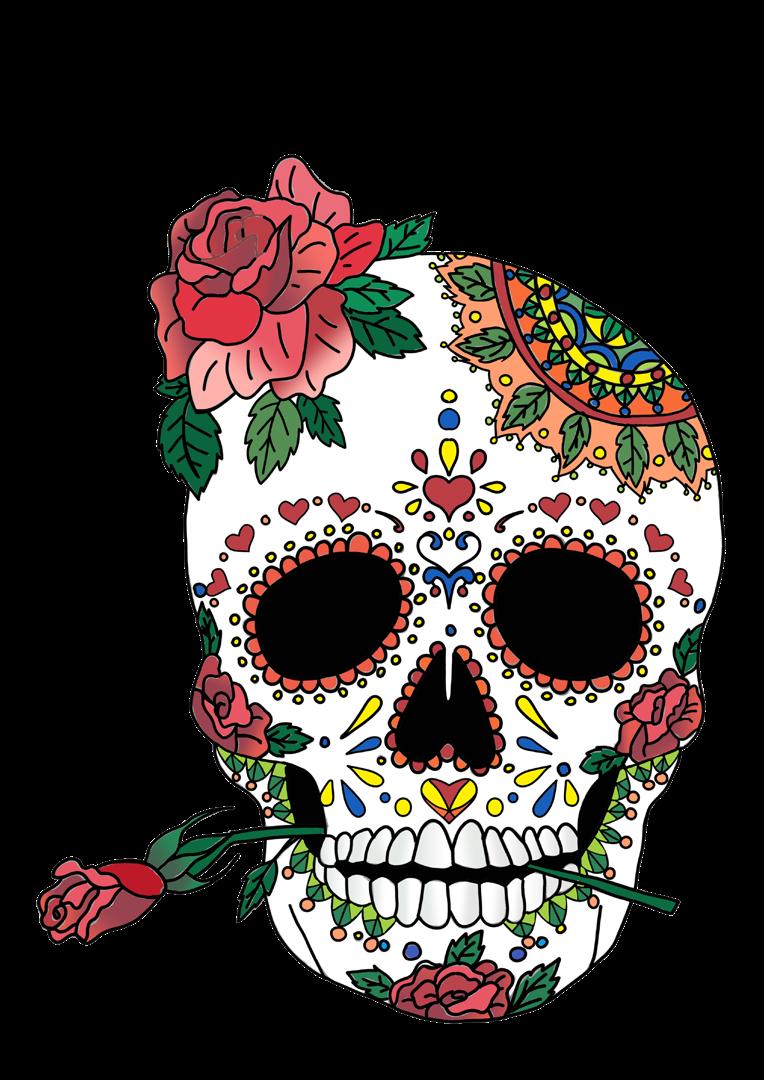
Pan de Muerto, Calacas, Papel Picado, Community Ofrenda

AWARD-WINNING, STUDENT-RUN BILINGUAL NEWSPAPER AT CAL POLY HUMBOLDT





writers • copyeditors • translators photographers • videographers graphic designers • artists social media • PR • website tech WE

JMC 160/360: 2 Units - C/NC
MW 4 -6 pm
OPEN TO ALL MAJORS
Spanish NOT a requirement